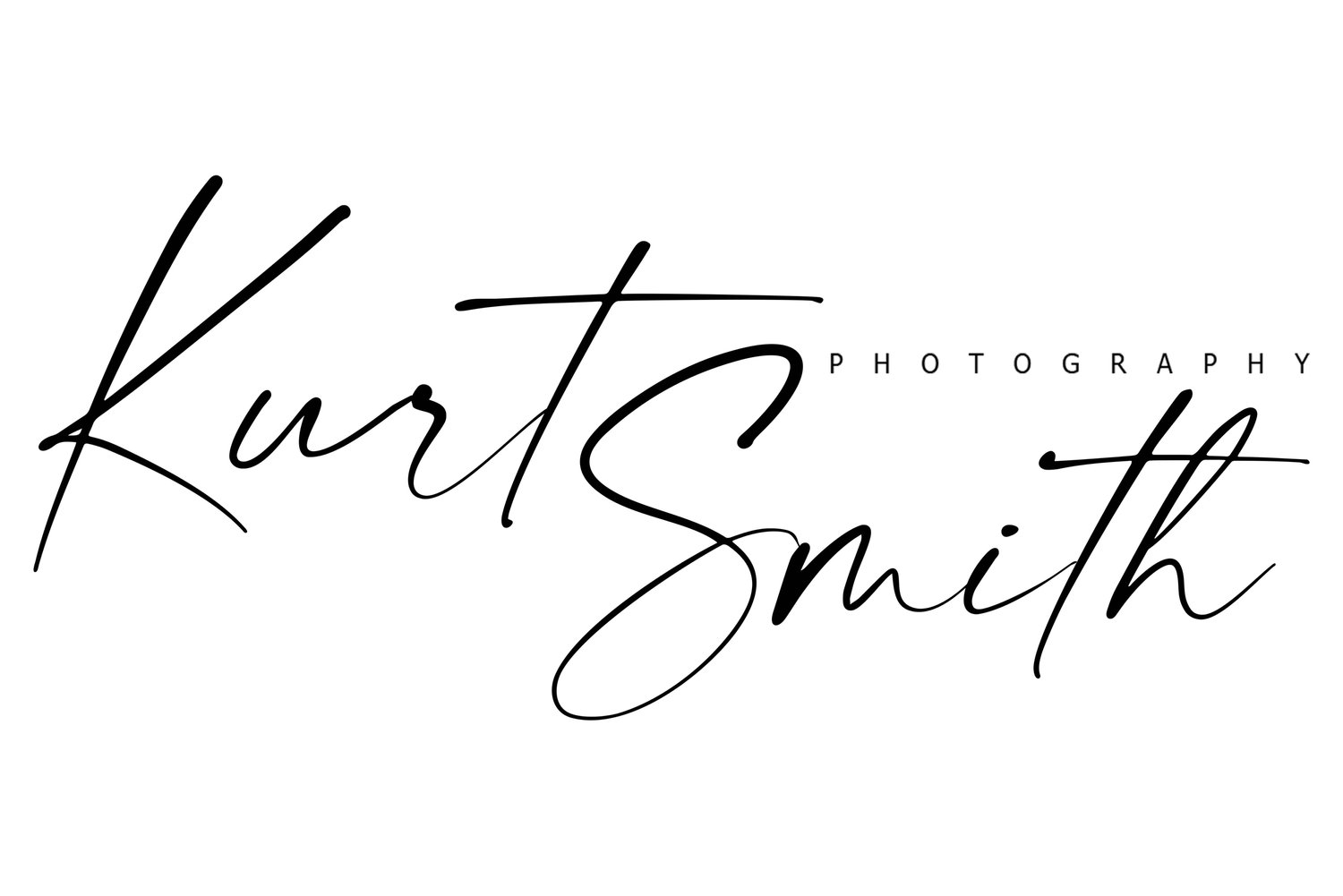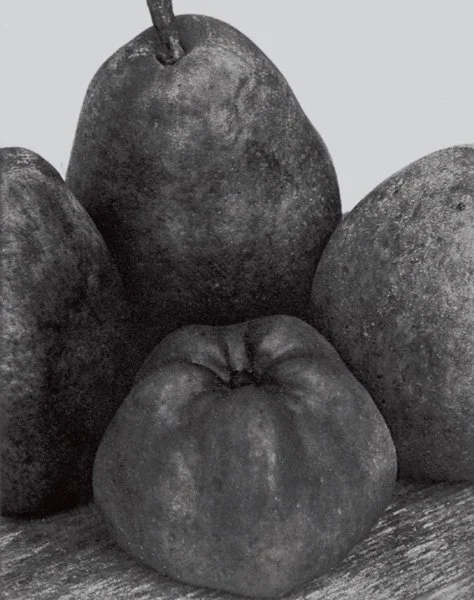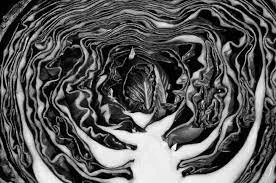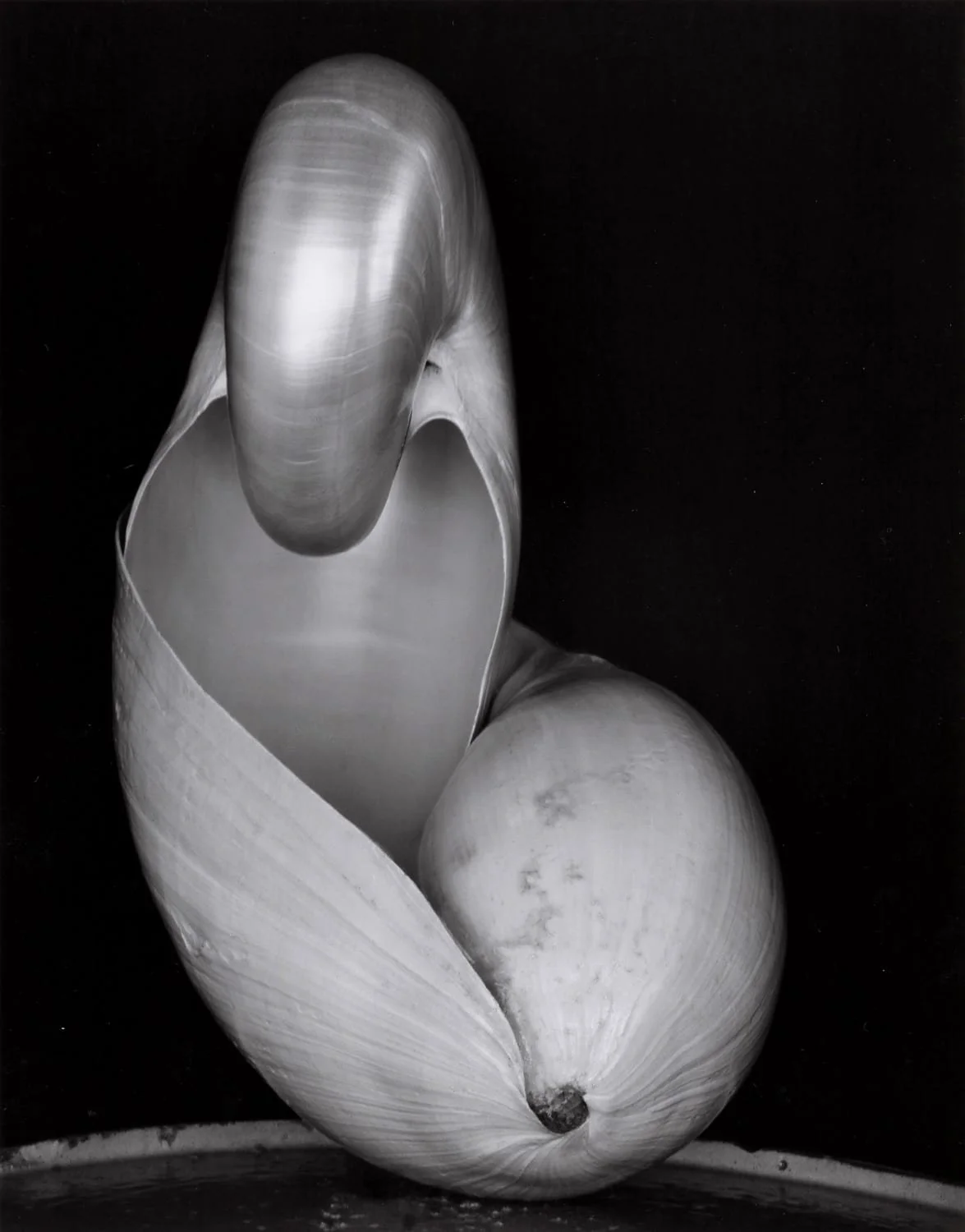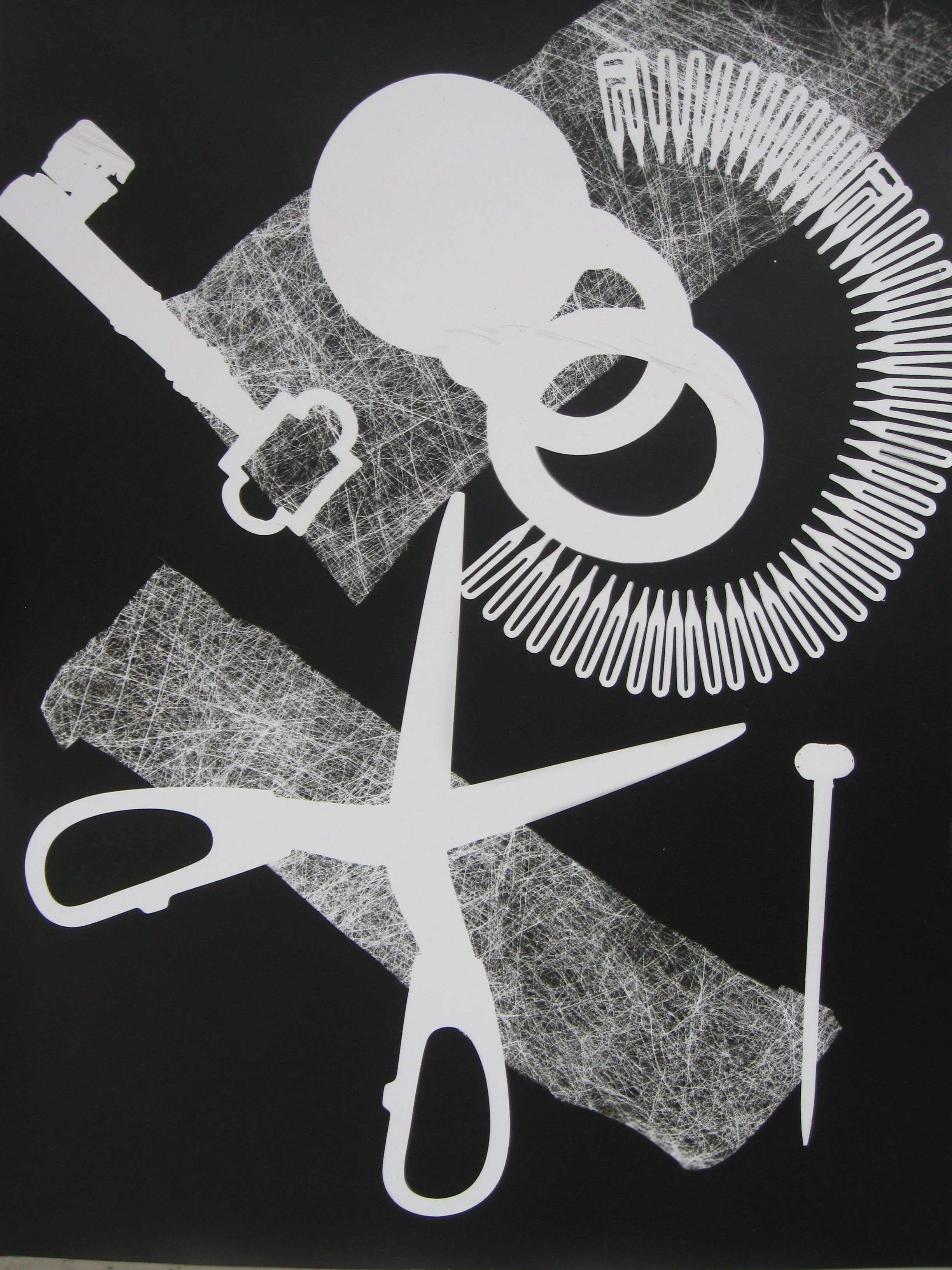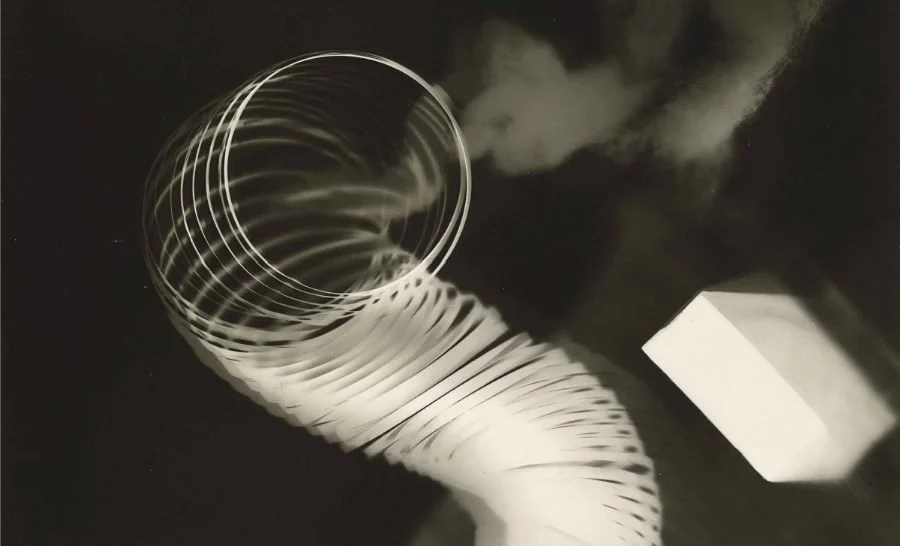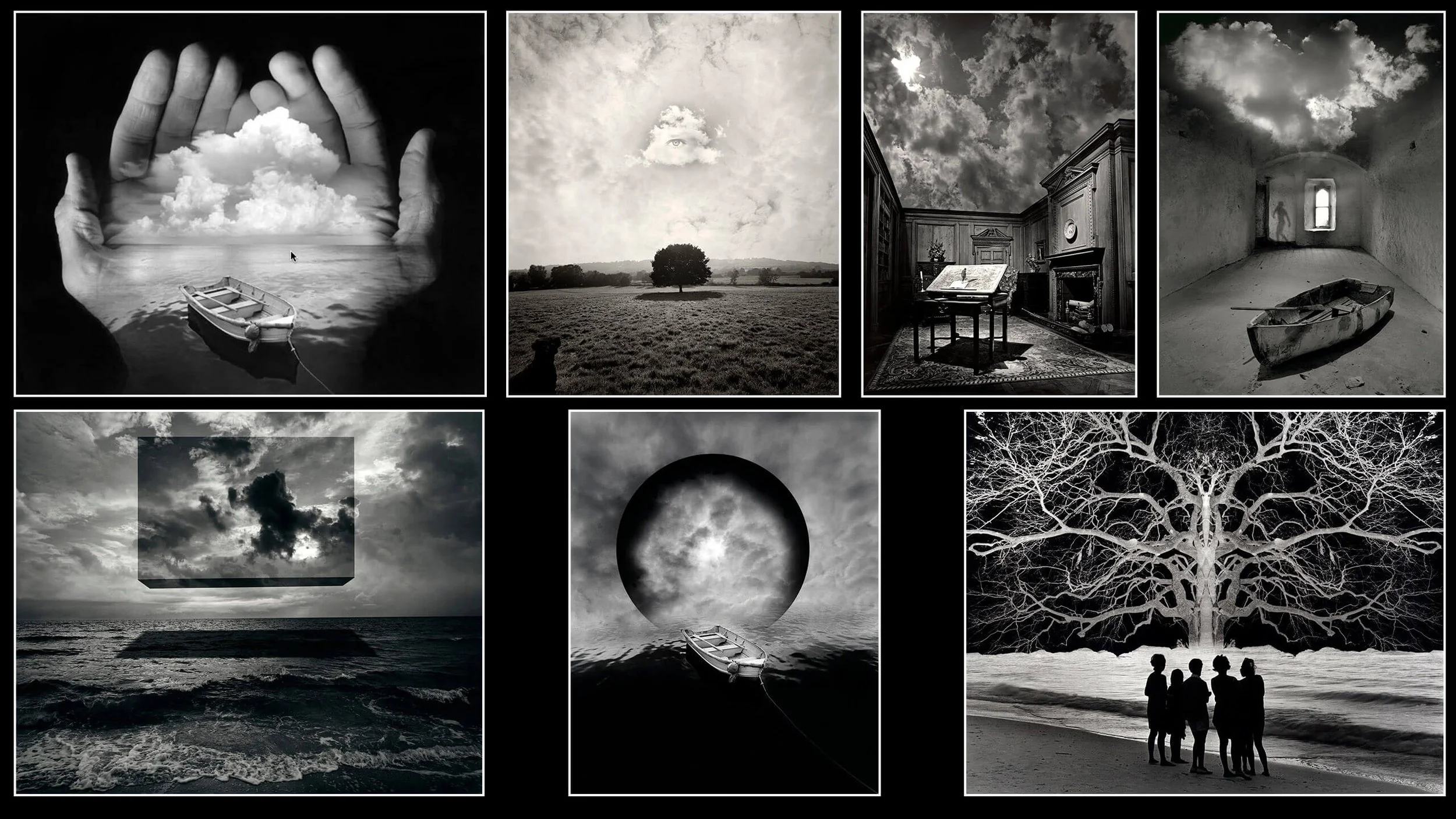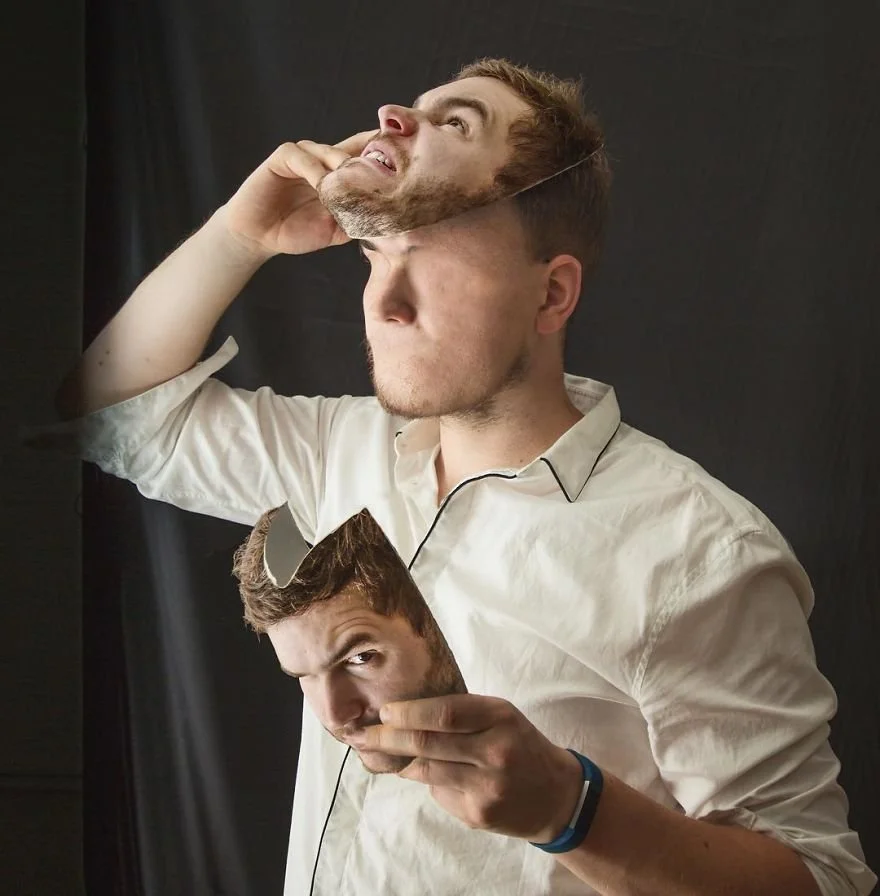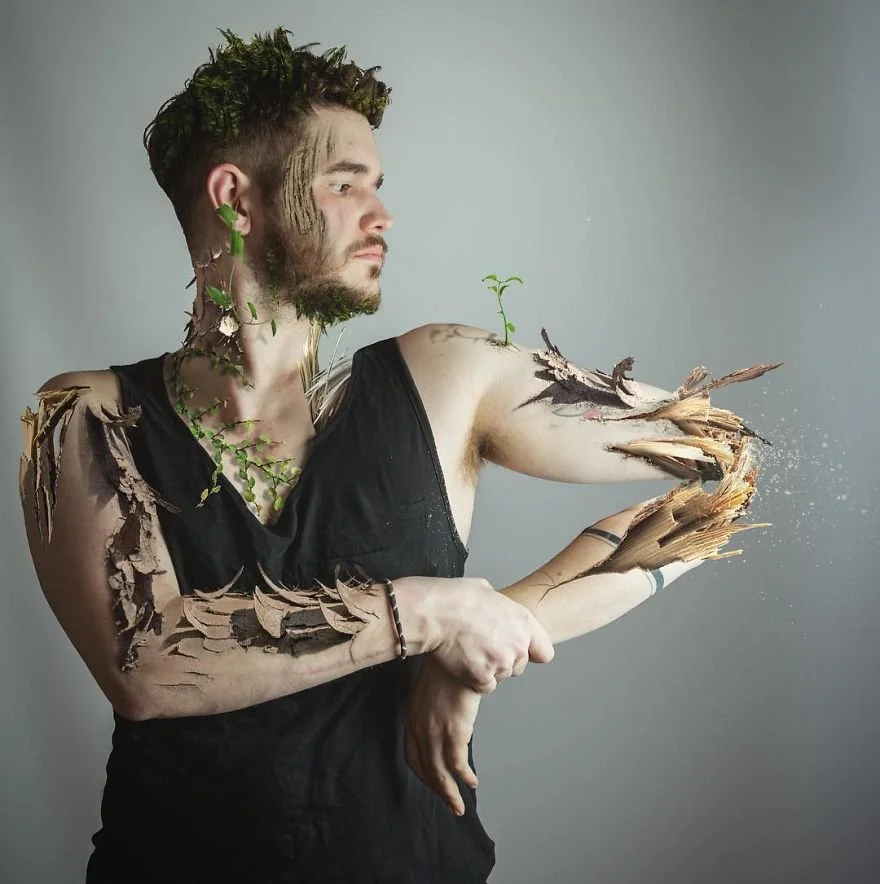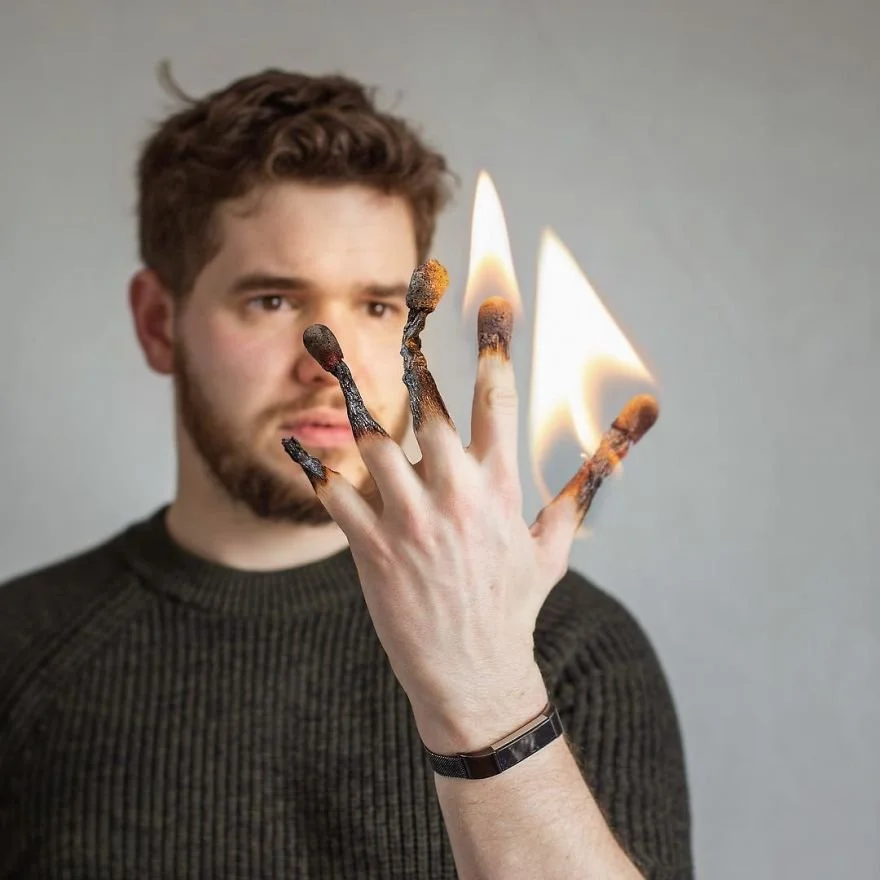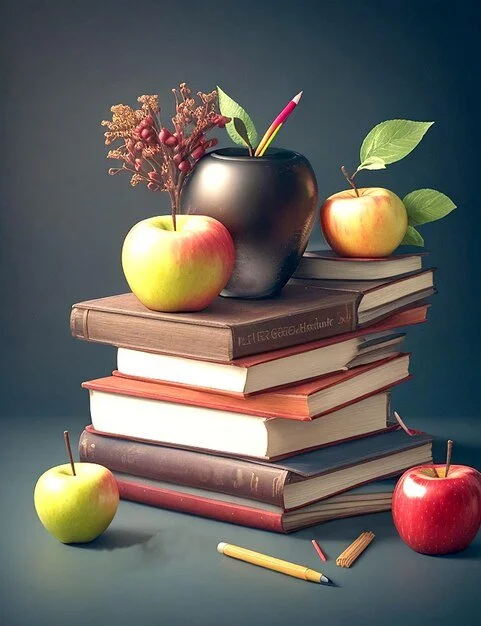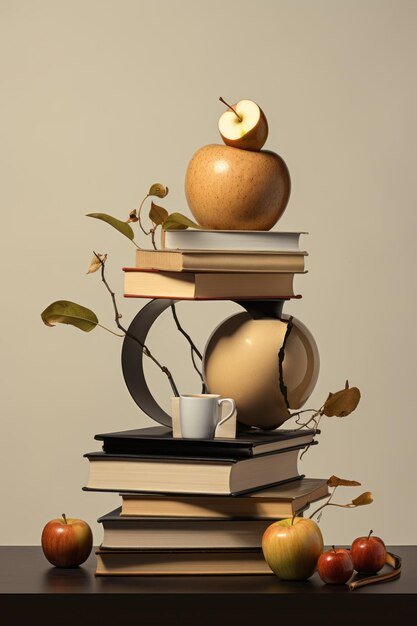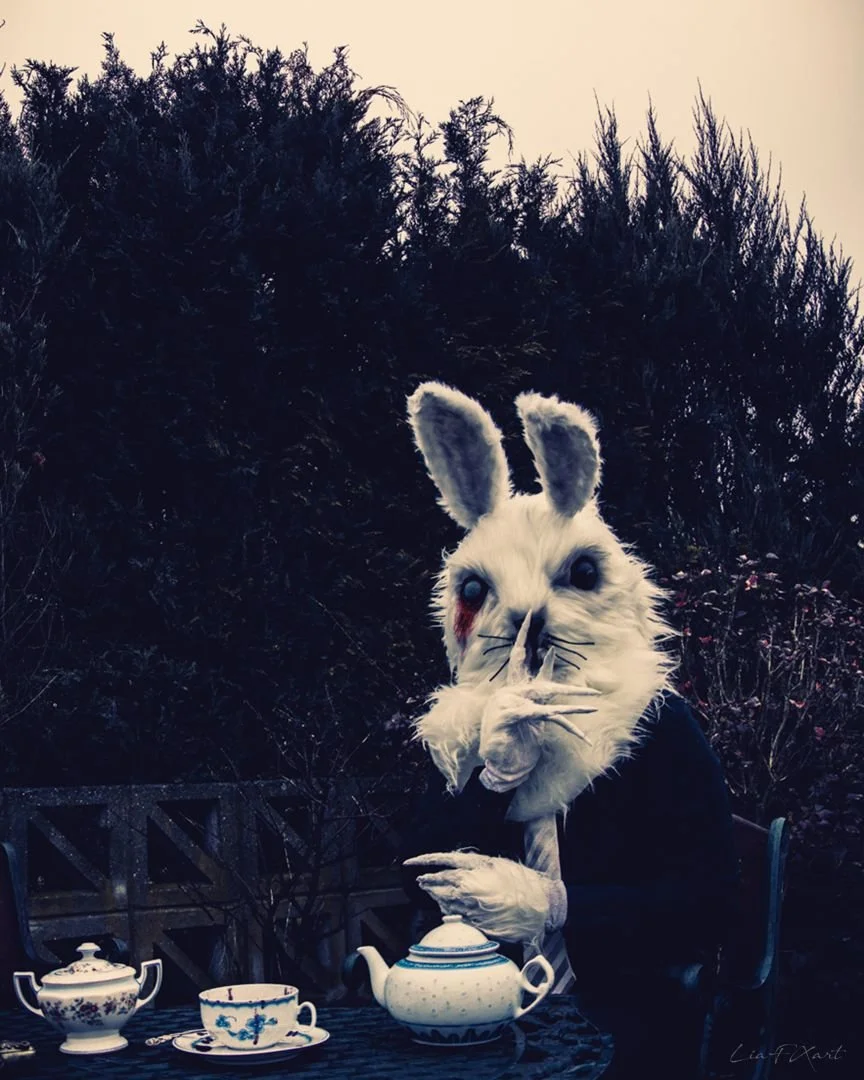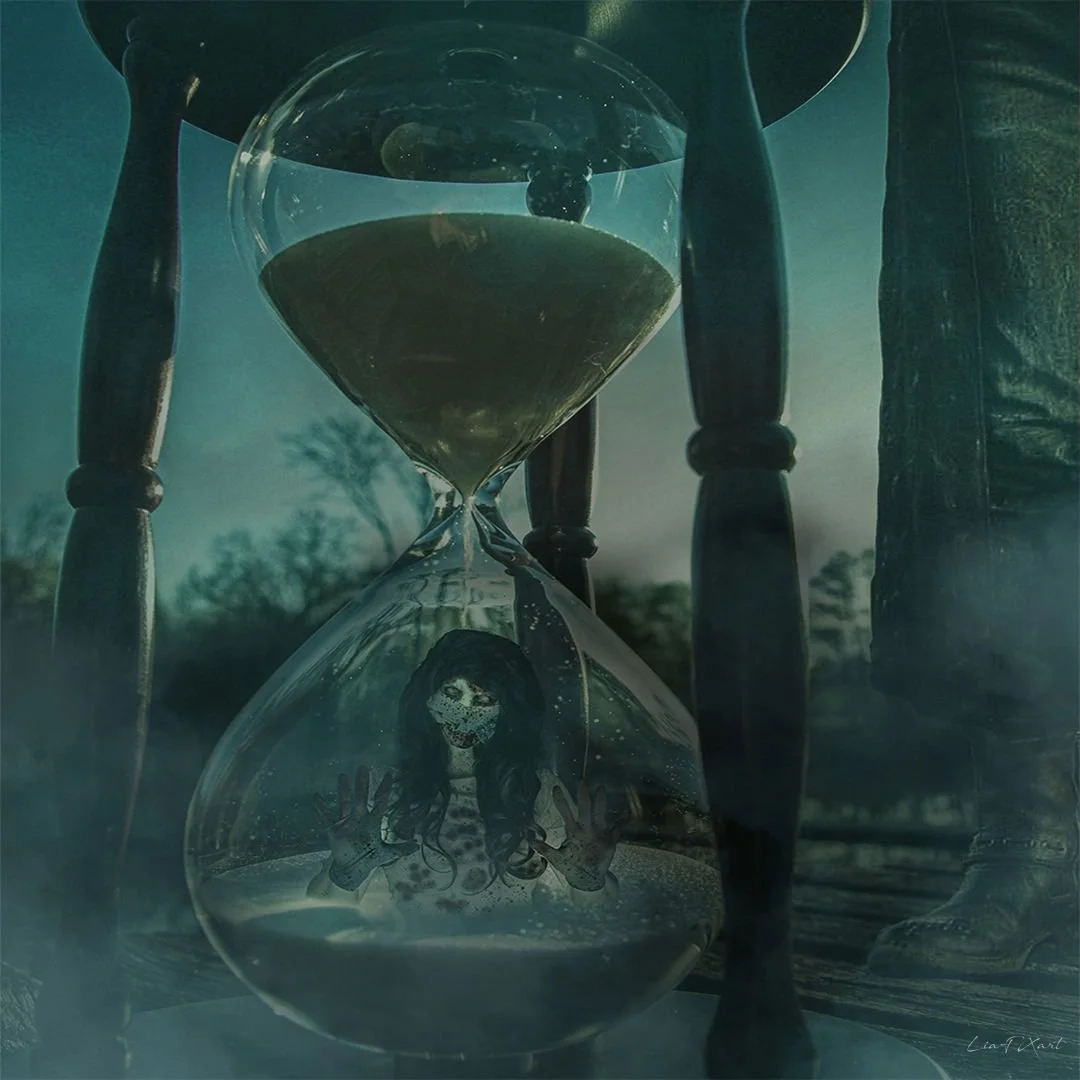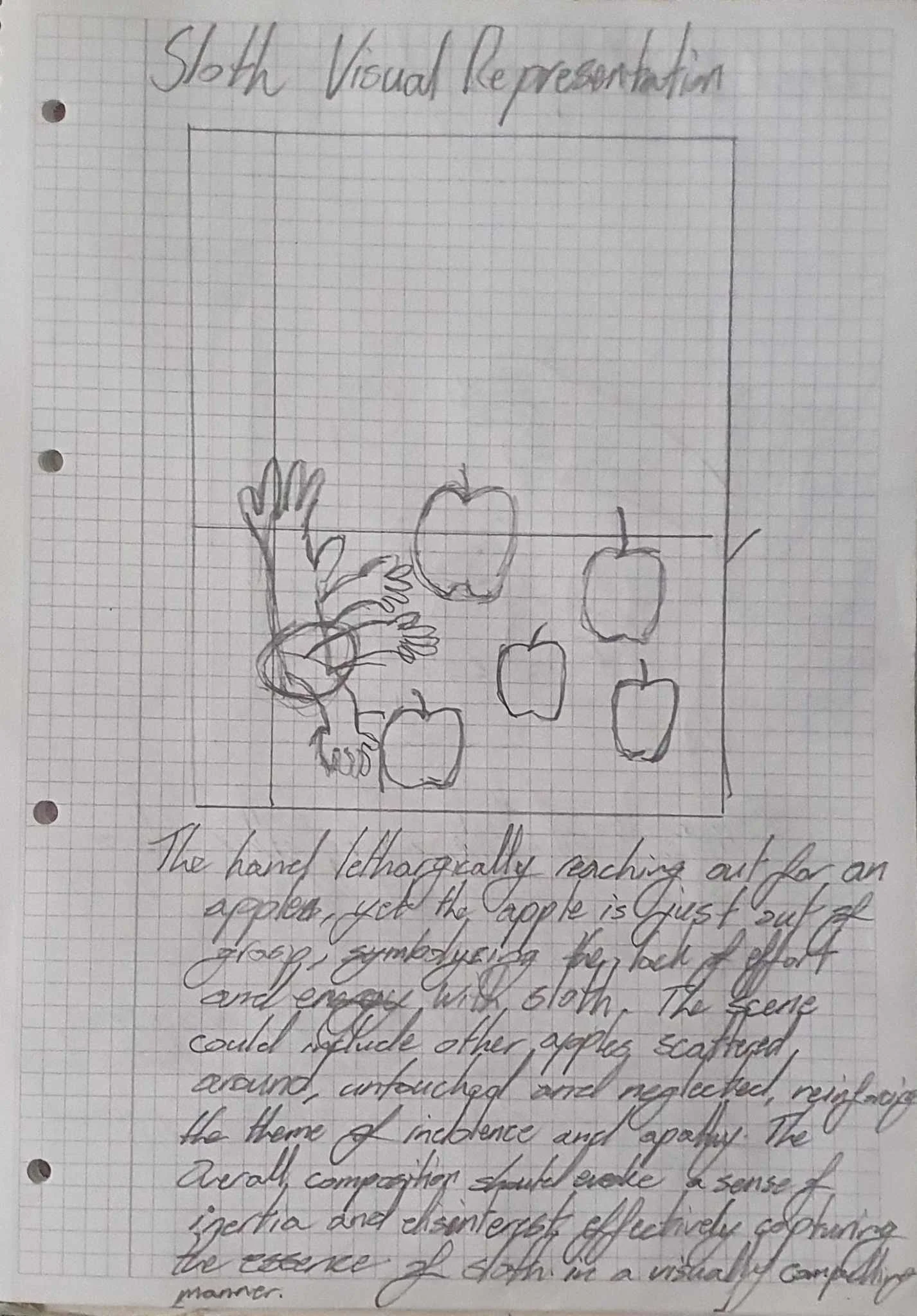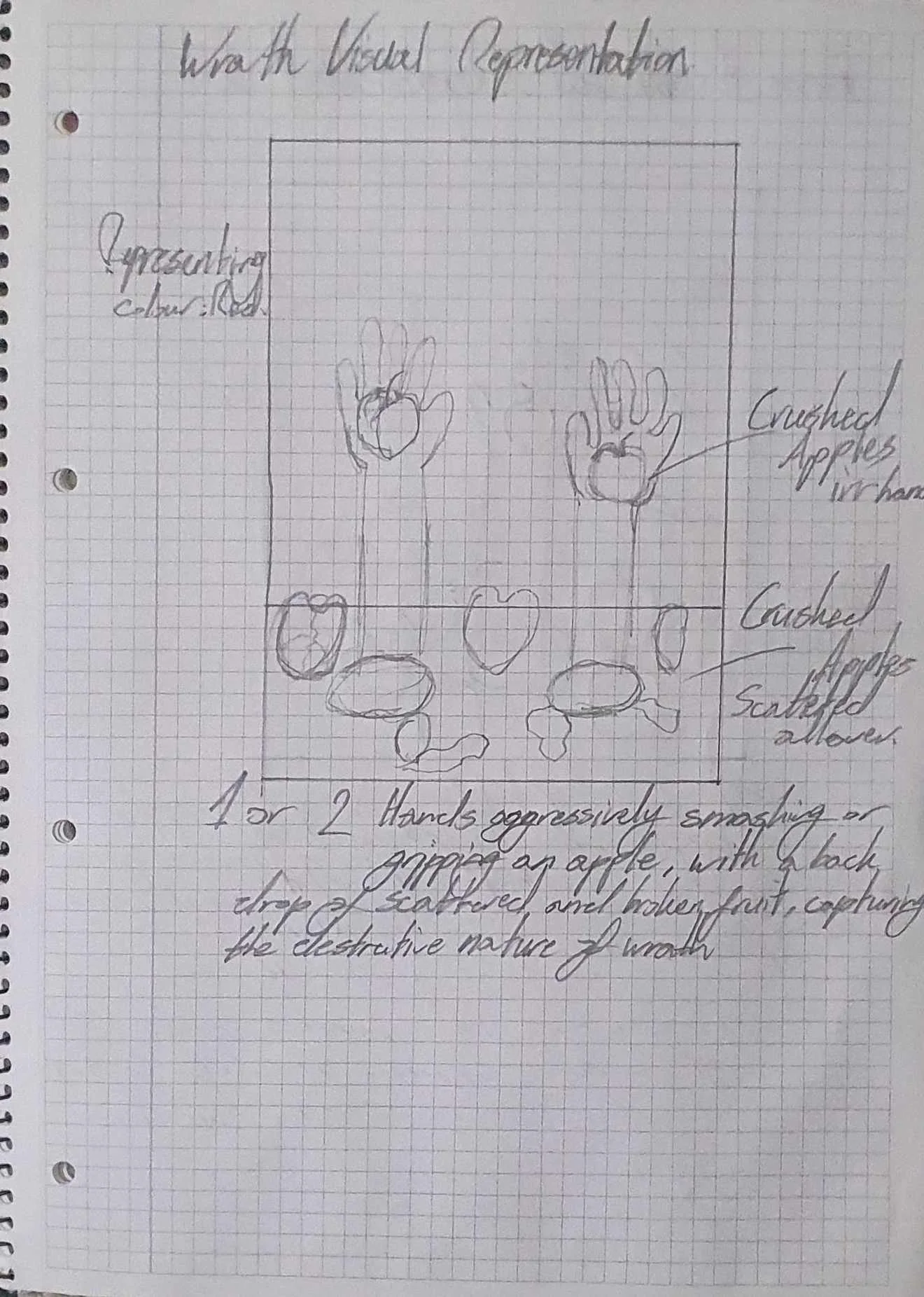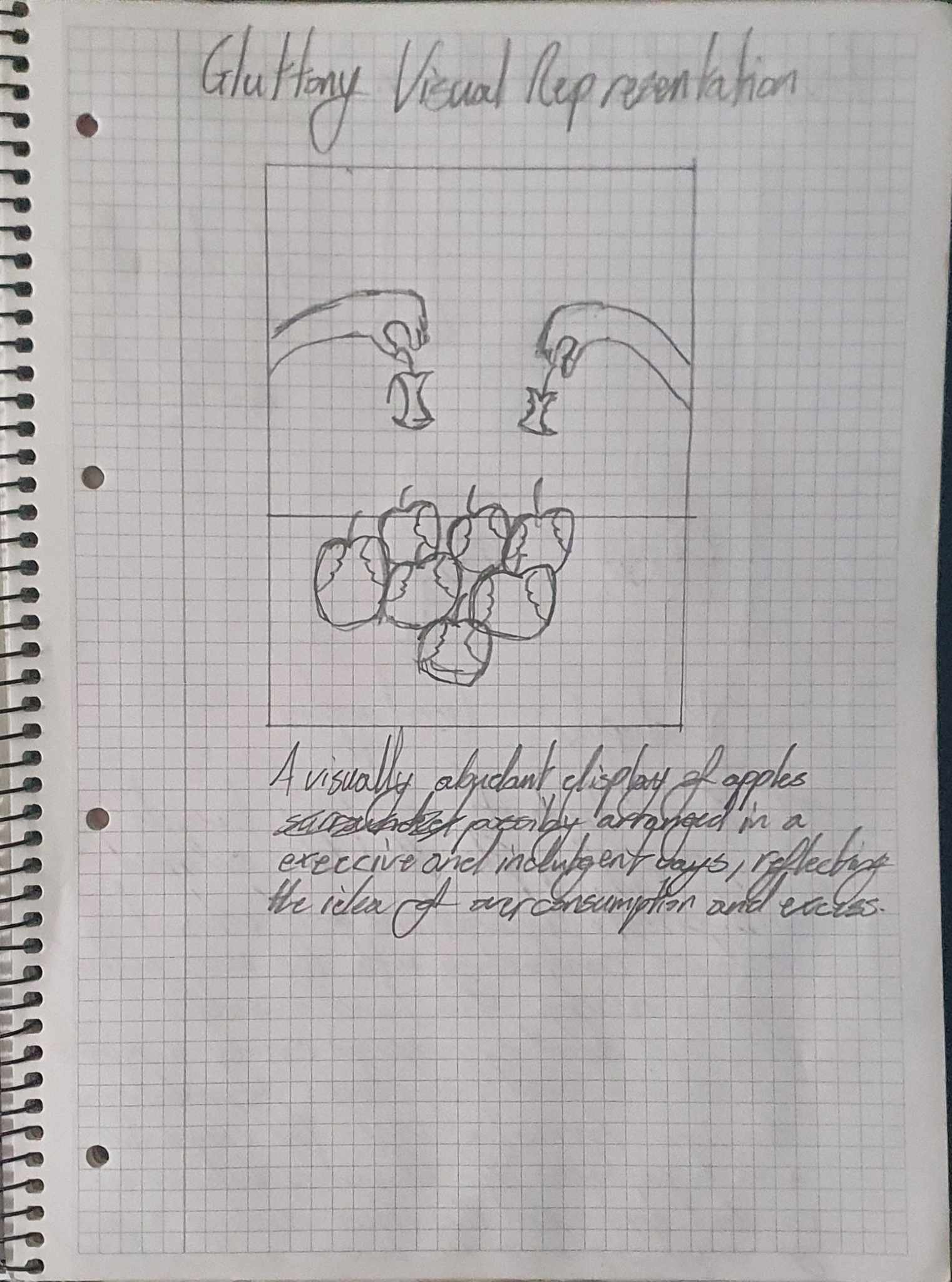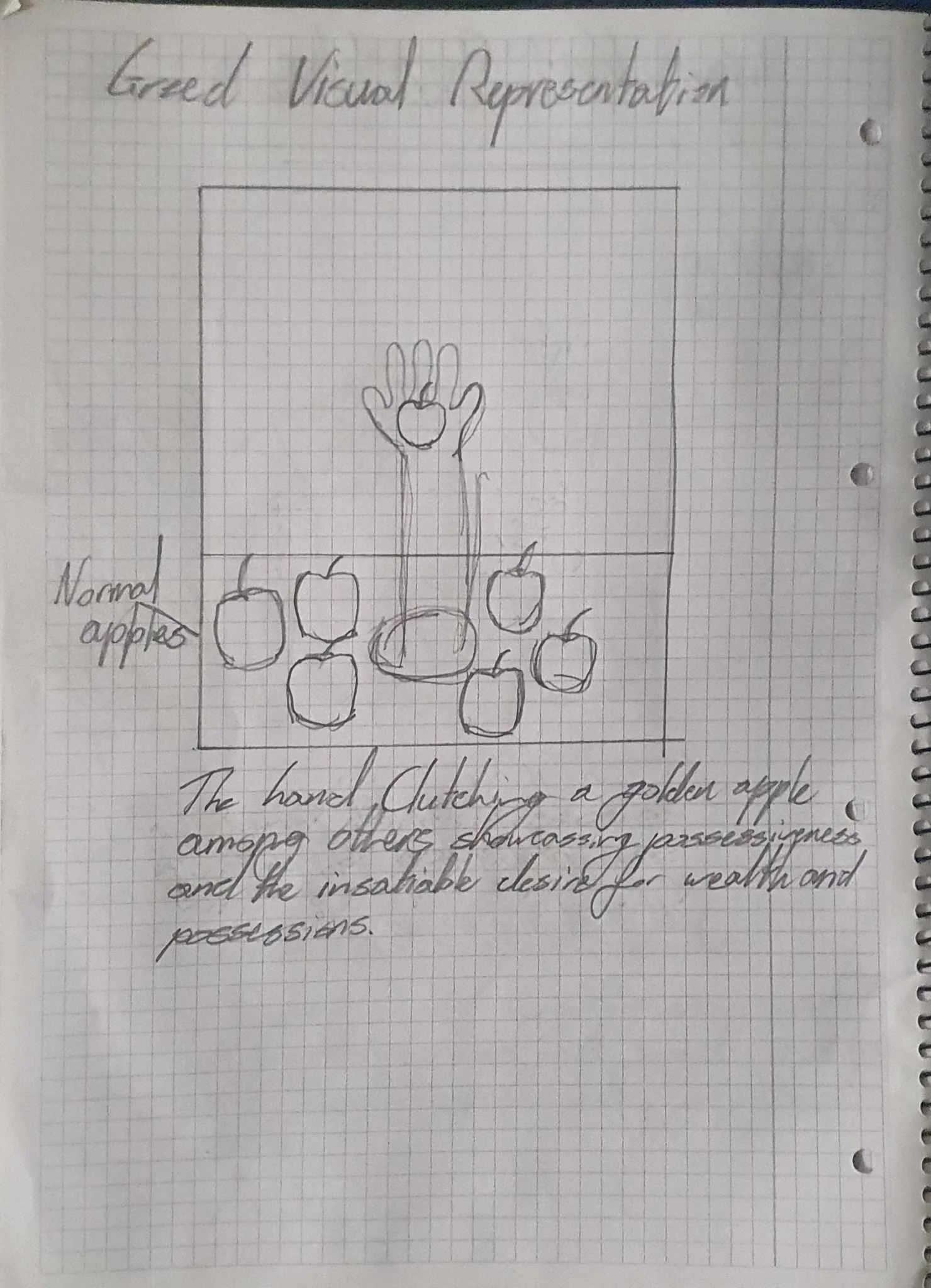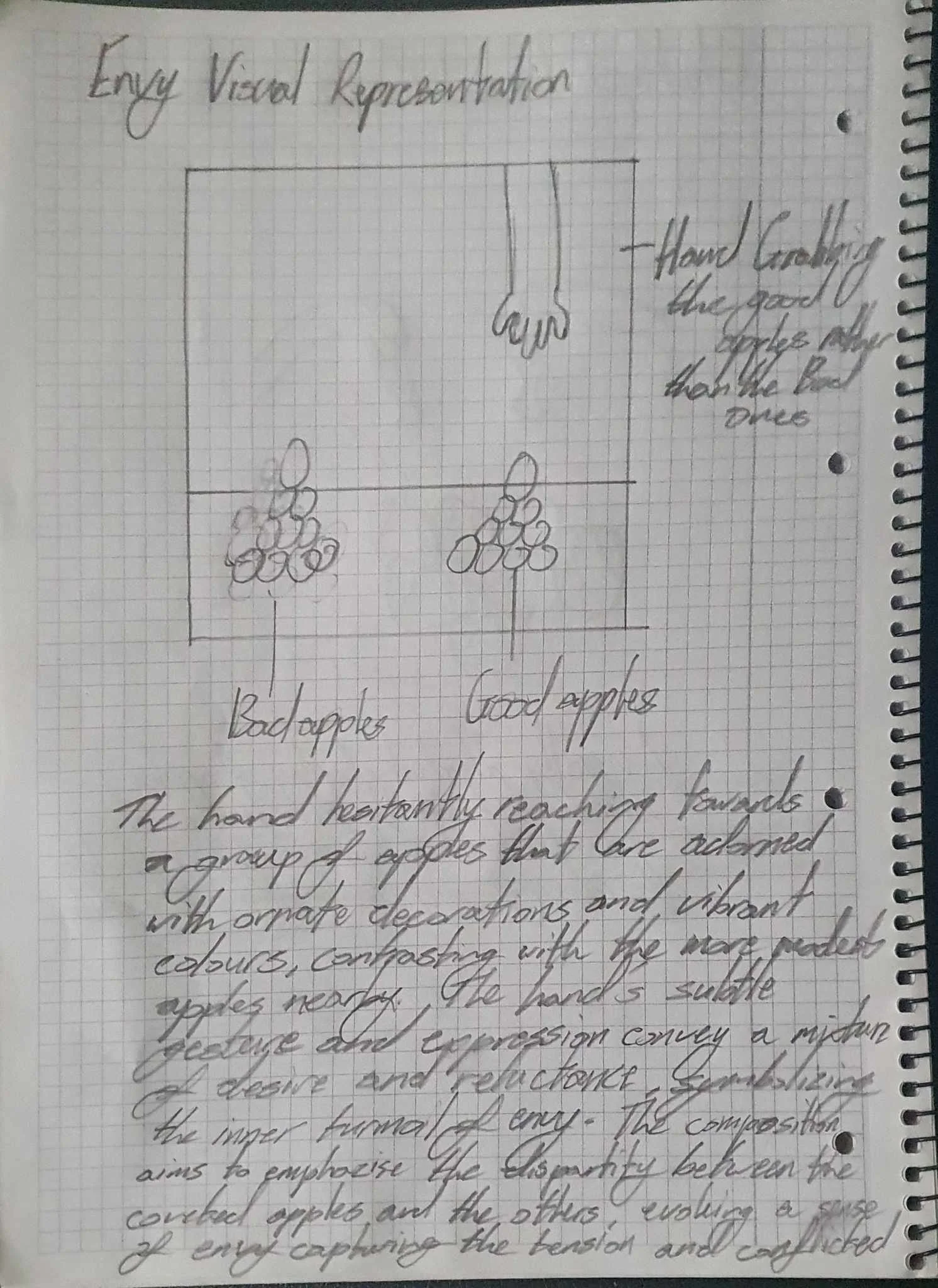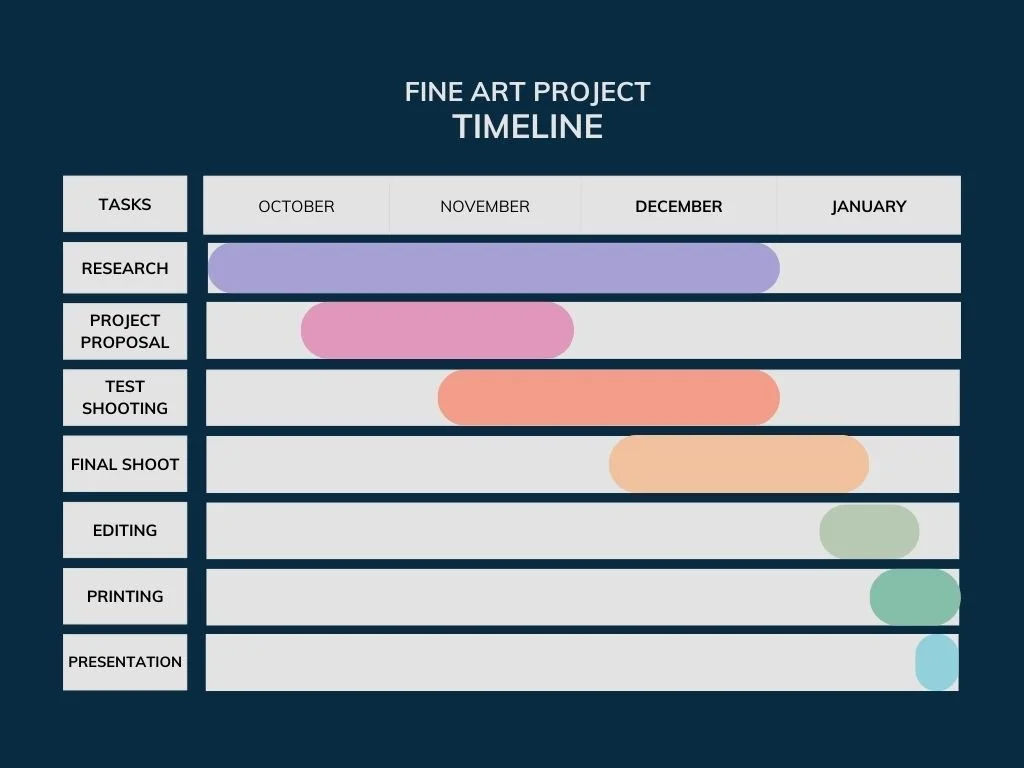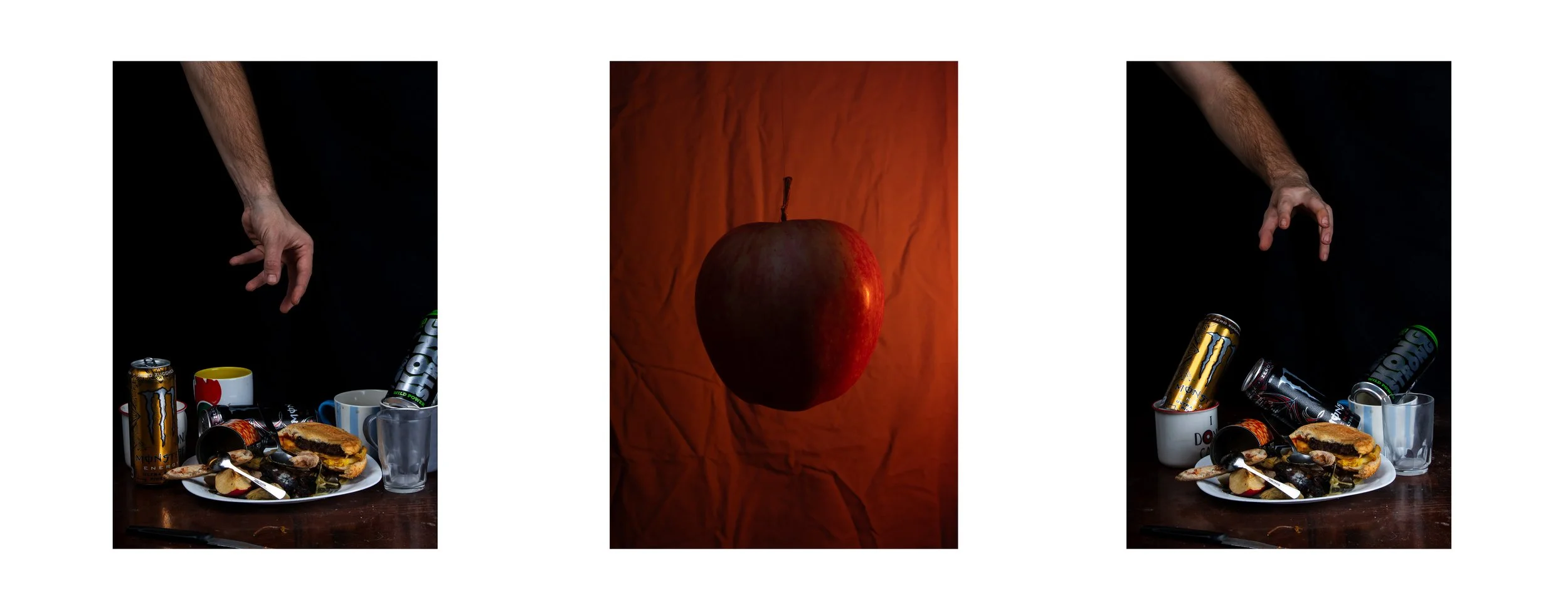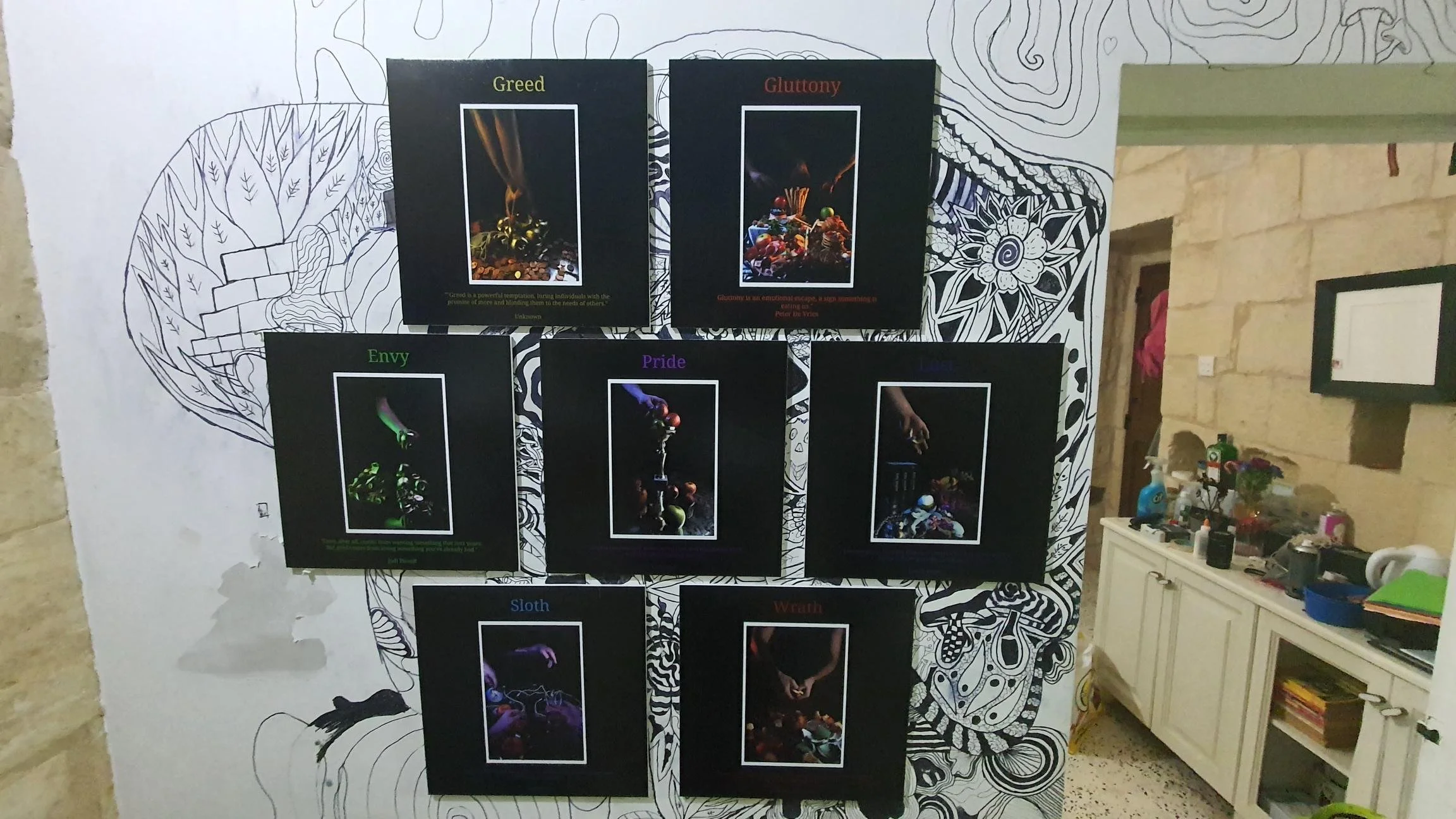Fine art photography
What is fine art photography
The artist and their interpretation of the scene are fundamental to fine art photography. The camera is only a tool for creating art; what the camera sees is secondary to what the artist wants to make of the scene. A photojournalist, for example, utilises the camera to capture an exact portrayal of their topic, whereas a fine art photographer isn't necessary interested in depicting the subject with any precision at all.
Decide on a subject
Do your research
Plan, propose your idea
Choose wisely your final images
Interesting works from photographer who base on Fine art photography.
Laura Letinsky - the dog and the wolf
Born in Canada in 1962, Laura Letinsky presents her most recent photo series, "The Dog and the Wolf." Drawing inspiration from Aesop's Fable and the French phrase "L'heure entre chien et loup," signifying the change from day to night, the series embodies the enigmatic moment when a dog changes into something that is neither completely canine nor fully wolflike. Letinsky now explores dusk, departing from her earlier work, which was illuminated by morning light.
Letinsky's still life images in this research have a slightly macabre yet beautiful quality. Alongside lollipops, candy canes, and partially eaten fruit from the artist's daily life, the subjects, which range from dead hares and birds to an octopus, are reminiscent of bygone genres.
Letinsky received her MFA from Yale University in 1991. She was also awarded the John Simon Guggenheim Fellowship in 2000. Her work can be found in a number of prestigious collections, including the Museum of Contemporary Photography in Chicago, the Stuttgart Museum in Germany, the San Francisco Museum of Modern Art, the Art Institute of Chicago, the Amon Carter Museum, and the Houston Museum of Fine Arts.
Letinsky, who has had exhibitions all over the world, most recently in Rome, London, and Bochum, Germany, had been an Artist in Residence at the Three Shadows Photography Art Centre in Beijing, China, and Randolph Cliff, Edinburgh College of Art, Scotland, during the past summer. A thorough examination of her oeuvre, arranged by the Winnipeg Art Gallery, is scheduled to tour in 2010. At the University of Chicago, Laura Letinsky is a professor at the moment.
Niels Ackerman - looking for Lenin
Among the many exhibitions in a recent edition of Les Rencontres d'Arles, the project "Looking for Lenin" was a wonderful and surprising discovery. The show and book, which were curated by French writer Sébastien Gobert and Swiss photographer Niels Ackermann, are notable for their masterful design and enduring influence.
In order to realise this project, Ackermann and Gobert journeyed across Ukraine, looking for remnants of the renowned Russian revolutionary Vladimir Lenin. In comparison to Russia, which has about 7,000 statues spread across a far greater territory, Ukraine claimed over 5,500 statues of Lenin at the height of his remembrance, demonstrating the enormous imprint of communism on the nation's geography and historical memory.
Lenin's departing figure became a powerful emblem of Ukraine's struggles to become an independent state. A government-led "decommunization" campaign that began in 2015 sought to eliminate all reminders of the Soviet past. In an effort to capture Lenin's influence before it entirely disappeared, Ackermann and Gobert set out to create a project that was called a "catalogue and typology of decommunization."
Their innovative presentation of their work is what distinguishes it in Arles. The room's well-curated photo collection, together with text and a multimedia installation, acknowledges Ukraine's difficult effort to forge a sense of national identity while also evoking a feeling of humour and discovery. The initiative makes the audience grin for a brief while, but it also leaves a lasting effect.
It is clear from their perspective that Lenin is still relevant in Soviet mythology even a century after his passing. The revolutionary cry, "Lenin lives! ", has faded. Lenin is with you! ", his gargantuan image has tenaciously persisted and been difficult to completely eradicate.
Photographers that contribute to the Fine art world.
Edward Steichen (1879 - 1973)
Edward Weston (1886 - 1958)
Man Ray (1890 - 1976)
Jetry uelsman (b.1943)
Joel - peter Witkin (b.1939)
Hirashi Sugimoto (b.1948)
These are just a few examples of fine art photographers, and there are many more unique styles pf perspectives. fine art photography allows for a broad range of artistic expression and experimentation, making it a continually evolving and captivating field.
Edward Steichen (1879 - 1973)
As a well-known photographer and curator of influence, Edward Steichen played a crucial role in shaping photography during the 20th century. He came to the United States in 1881, where he painted and made lithographs until 1896, when he started taking pictures. After obtaining naturalisation in 1900, Steichen displayed his initial photos in 1899 and was encouraged by Clarence White, which led to Alfred Stieglitz's acknowledgment.
Steichen's exposure to modern art movements during his sporadic painting stints in Paris between 1900 and 1922 influenced his advisory position in Stieglitz's show selections. In 1902, he co-founded the Photo-Secession, contributed to the London Linked Ring Brotherhood in 1901, and created the cover art for Camera Work. He was instrumental in the founding of the "291" gallery in New York and took part in the 1910 International Exhibition of Pictorial Photography in Buffalo.
Steichen oversaw aerial photography for the Army Expeditionary Forces during World War I, which signalled a turn towards modernist photography. From 1923 to 1938, he was Condé Nast's chief photographer. Later, in World War II, he was appointed director of the U.S. Naval Photographic Institute. Steichen oversaw almost fifty shows while serving as the Museum of Modern Art's photographic director from 1947 to 1962, including the renowned "The Family of Man" in 1955.
Steichen received many honours for his outstanding work, including the Presidential Medal of Freedom and knighthood in the French Legion of Honour. His long influence on the history of photography has been cemented by the major exhibitions of his work that have taken place at prestigious institutions across the globe.
Throughout his work steichen dwells around with capturing portraits of people, though a particular subject that intrigued me are his still life photographs.
sunflowers from seed to seed (1920 - 61)
three pears and an apple
edward Weston
The history of photography has been forever altered by the immensely important American photographer Edward Weston during the 20th century. His sons are carrying on his legacy by reproducing his negatives. His photographic voyage commenced in 1906 and continued until his death in 1958.
Weston ran a portrait studio in California early in his career and won praise from all over the world for his creations. A crucial visit to the ARMCO Steel Plant in Ohio in 1922 changed his approach to photography. Weston began to concentrate on taking pure pictures that captured the spirit of the things, whether they were natural or man-made.
Edward Weston left for Middletown, Ohio, where his sister may had moved, in the autumn of 1922. Earlier in the year, Weston had come to accept modernism and promoted candid shots that captured the busy industries of the day. His trip to Ohio gave him the chance to live out his convictions, especially when he explored the Armco plant and took pictures of the American Rolling Mill Co.'s towering stacks. principles, Weston travelled to New York City to meet with Alfred Stieglitz, a well-known supporter of Modernism and direct photography. With the help of his sister and brother-in-law, who provided financial support, Weston was able to travel and meet Stieglitz with prints, including his recently released Armco series. The meeting proved to be pivotal as Stieglitz offered criticism and appreciation for Weston's work. In addition to works by Charles Sheeler, Paul Strand, Paul Cézanne, and Pablo Picasso, Weston's exposure to Stieglitz's most recent shots and artwork by Georgia O'Keeffe further strengthened his dedication to his changing artistic approach.
Weston relocated to New Mexico in 1923 after meeting with prominent painters in New York City. There, he set up a photography studio and produced portraits and nudists. He made relationships with well-known artists like David Siqueiros and Diego Rivera.
Edward Weston's cabbage, pepper and seashell shots are at their best when it comes to this picture, which has become a symbol of Modernist photography. Its simple yet effective arrangement captures the essential ideas of the f/64 group. Using'straight photography,' which is another name for the f/64 method, Weston captures the common cabbage with an eye for detail, careful composition, and a wide dynamic range of tones.
In his works, Weston expressed his intention to capture the essence of the subject in front of his lens, stressing an unadulterated, pure celebration of the object's natural beauty. He avoided interpretation and fleeting emotions in favour of providing a continuous and thorough record of the subject's essence. Without any kind of camera trickery, the image elevates the common leaf into a form that is both colossal and sensual. The surface's undulations radiate movement and beauty; Susan Sontag likened them to 'a fall of collected cloth'. Weston's amazing sense of texture is evident in his skillful rendering of a rich range of black-and-white tones, which highlights the natural beauty of the leaf.
In 1932, Weston joined Group f/64 and worked alongside such notables as Ansel Adams. Notably, some of his best work is regarded as coming from his 1936 series that captured nudists on sand dunes in Oceano, California. In 1936, Weston became the first photographer to get the Guggenheim Fellowship as a result of his experimental work. Retrospectives at prestigious institutions like the Smithsonian and MoMA perpetuate his influential legacy and serve as an inspiration to upcoming generations of photographers.
Man Ray
Man Ray, formerly known as Emmanuel Radnitzky, exclaimed with joy in 1922 that he had been freed from paint and that he was looking forward to working directly with light through camera-less photography. Man Ray, who is well-known for his "rayographs," a whimsical mash-up of his name and "photograph," got his start in the Dada movement as a reaction to the horrors of World War I and the emergence of contemporary media culture.
Man Ray experimented with negative space, shadows, and the surrender of compositional control to accident in his painting "The Rope Dancer Accompanies Herself with Her Shadows," which was inspired by chance and spontaneity. These themes were later repeated in his photographic work.
Man Ray became interested in rayographs after arriving in Paris from New York in 1922. He used photosensitized paper exposed to light to create negative images. His experimentation emphasised the abstraction of images by embracing accidental arrangements and irrational pairings, even though it was not particularly new. These rayographs, which were published in the 1922 portfolio "Champs délicieux" and had a preface by Dada's Tristan Tzara, demonstrated his inventive style.
André Breton spearheaded Man Ray's venture into Surrealism, which exposed the strange in ordinary existence. Works like as "Anatomies" used light and framing to change recognisable appearances, and Surrealist objects like "Gift" and "Indestructible Object" demonstrated his ability to reinvent commonplace objects. His flexibility made him an essential component of The Museum of Modern Art's early programmes, spanning photography, painting, sculpture, cinema, and exhibitions. A significant 1941 donation added to MoMA's holdings by adding 24 direct rayographs from the 1920s, which fulfilled Man Ray's dream of automating photography in the same way that one uses a typewriter.
Jerry Uelsman
American photographer Jerry Uelsmann was born in Detroit in 1934 and is well-known for being one of the first to use the photomontage technique. His love of photography took off in high school, and he went on to complete his MFA and MS degrees at Indiana University in 1960 after receiving a BFA from the Rochester Institute of Technology in 1957. One of the most important people in his artistic development was the renowned Fine Art photographer Henry Holmes Smith.
A key turning point in Uelsmann's career was reached in 1967, when the Museum of Modern Art in New York hosted a historic solo exhibition that launched his career. Prominent global institutions such as the Art Institute of Chicago, the Bibliotheque National in Paris, and the National Gallery of Canada have showcased his artwork.
Uelsmann's unique method entails piecing together several negatives on enlargers to produce images that are susceptible to personal interpretation. Works such as "Apocalypse I" and "Journey into Self" demonstrate the breadth of his creative abilities. "All American Sunset" deftly includes a sandwich into a scene of a beach. In addition to his installations, Uelsmann is the author of the publications "Twenty-Five Years: A Retrospective" and "Process and Perception."
A recipient of numerous honours, including as a Guggenheim Fellowship in 1967, Uelsmann was inducted into the Florida Artist Hall of Fame in 1994. Living in Gainesville, Florida, at the moment with his digital artist wife Maggie Taylor, Uelsmann has developed a book about photography titled "Referencing Art," which examines the impact certain artists have had on his career. Even though he produces more than 100 photographs a year, it can be difficult to pinpoint his finest work because of his high standards.
Joel-Peter Witkin
American photographer Joel-Peter Witkin was born in 1939. His focus was on documenting the lives of marginalised people throughout history. In his well-known work "Female King" (1997), a substantially built woman assumed the role of an antiquated tribal monarch. "Abundance" (1997), another noteworthy piece, featured an armless and legless woman embellished in an urn filled with pearls, fruits, and flowers.
Drawing inspiration from early Daguerreotypes and E.J. Bellocq, Witkin's images reflected the methods of a bygone period. He frequently toned, damaged, or bleached prints using practical chemical development. Because of an early encounter with a horrific vehicle crash, he regularly explored death and featured mutilated bodies in his artwork.
After serving as a combat photographer in Vietnam (1961–1964), Witkin turned to freelance photography. He started his official study in sculpture at Columbia University, where he graduated with a BFA in 1974. In 1986, he went on to receive an MFA at the University of New Mexico.
Witkin began his photographic career without receiving any official education, although his images were much appreciated. He has been exhibiting since 1959; his first solo exhibition took place at Projects Studio One in New York throughout the 1980s. His photographs have been shown all over the world, notably in shows at the Bibliothèque Nationale de France in Paris, the Galerie Baudoin in Madrid (1990), the Centro de Arte Reina Sofia Museum (1988), and the National Gallery of Canada in Ottawa (2004).
The self and the self portrait
What is the self through photography?
The fascinating world of self-portraiture has left an everlasting influence on both art history and photography's development. Self-portraits are essentially self-portraits captured by the subjects themselves. In this artistic endeavour, one must wear numerous hats, serving as both the subject and the producer of the image, as well as the viewer. To create an accurate self-portrait, you must have complete control over what appears in the frame and when the shutter clicks. The special attractiveness of self-portraits stems from this interplay between personal choice and the unique temporal picture. After all, it is the individual who determines when a specific event becomes immortalised, independent of external influence.
Here is where it gets interesting: photography isn't simply about taking attractive photographs. It can also serve as a therapeutic tool; photographing ourselves assists us in healing, understanding loss, accepting ourselves, and increasing our self-esteem. Life is an emotional rollercoaster, and our artistic expressions, such as self-photography, may be a powerful method to process our feelings and temporarily forget about our troubles.
In Neil Gibson's thought-provoking book "Therapeutic Photography," he believes that for an activity to be termed "therapeutic," there must be clear aims and intended outcomes. In other words, you go on a creative trip with the intention of navigating your inner world and have a definite aim in mind.
Representation of oneself by oneself
you are in control of all aspects of image making
Concept can be therapeutic to help the photographer z
Through the self, you are asking the viewer to attempt to understand:
the need to create these works
how we bought from them
the discover a different type of self
effective self portraits:
Think about what part of you want to convey in your portrait
What emotion do you want to instil?
Can you portray what you can write in words, through your visual image?
Mind map/Moodboard - Who am i ?
I recently developed a mental map to explore my identity and make sense of who I am as part of a class project. Curiously, this assignment was similar to one that Mrs. Therese had done earlier in the personal style section. Lists of our identities, including our interests, preferences, and personal characteristics, were created throughout that session.
I started by summarising my personality traits, mentioning attributes like spontaneity, humility, empathy, and unpredictability. I use describing these qualities as a means of reaffirming the importance I have on my current self and encouraging introspection about both my past and present identities. In addition, I'm really appreciative of teamwork, making enduring memories, and showing compassion to people with whom I come into intimate contact. Even though I could come out as reserved at first, once I feel at ease, I usually open up and let my own personality show. During those times, I like to just kick back, relax, and feel the energy of the moment.
I then organised my hobbies, which span a wide range of interests. I have a strong affinity for music genres including alternative rock, punk rock, techno, and hardstyle. I also love doing sports just for fun. I am an avid fan of anime. Another thing I enjoy doing is playing video games. I also get inspiration from looking up thought-provoking quotations that address both the good and bad sides of life. And lastly, I love black humour.
I value both being by myself and having company. Because my birthday is on April 20, which is the day that the Aries cycle ends and the Taurus cycle begins, I am an Aries plus Taurus horoscope.
My goals for the future include learning how to play the drums, skating, changing the colour of my hair, and becoming fluent in Japanese.
Artists related to the self
Kyle Thompson
Kyle Thompson is a self portrait photographer with a strong cinematic feel of photography, every shot a sense of grandeur. you get the feeling of something is about to happen or perhaps has just happend. there’s a darkness to his work, the horror genre vibe that influences Thompson getting the sense of eeriness and unease from his self portraiture. there’s a story to each photo. the imagery is powerful and his composition is excellent. he knows how to entise and tell stories with his pictures.
The Void (2015)
Open Stage
Nicolas Bruno
Born in 1993, Bruno studied at Purchase College and received a BFA in photography in 2015. He owns his own studio, and most of his shoots and projects are captured within the area, as well as post-production. Bruno focuses his style of photography on the symbolic aspect of dreams, as he keeps a dream journal and starts each new series by analysing the experience. Throughout his photographic experimentation, Bruno has struggled with sleep paralysis for almost 10 years. Sleep paralysis is something that happens when an individual is sleeping. This happens when an individual is about to wake up or fall asleep; the body becomes immobile and the mind is still conscious, which can lead to hallucinations. With these episodes happening, Bruno decided to take an approach to a solution and seek advice from a therapist who helped him find a creative expression. This experience helped Bruno focus on self-portraiture as a therapeutic translation for the night tremors to cope with the fears and emotions that are familiar to an ordinary person, such as anxiety, suspense, uncertainty, and danger. Bruno was inspired by many historical painters, including the likes of Caravaggio, Casper Fredrich, and Jacques Louis David. The reason being that Bruno could interpret and decontextualize the styles of the artists mentioned.
The photo series that Bruno has developed is called “Between Realms”. The series consist of 9 images, 5 embellished works, and 3 drawings. “Between Realms” focuses on the transition of Bruno’s dreams being able to cope and control his sleep paralysis. Having a sense of confrontation and self-possession, whilst Bruno faces his fears, he also dwells on the emotions acknowledged and making them all relate both in the realm of dreams and reality.
Throughout Bruno’s Project of “Between Realm”. It can related that his experiences as an individual also do suffer from Sleep paralysis, confirming that the feeling of having sleep paralysis is a weird feeling and scary feeling. As an individual having experienced sleep paralysis since a very young age, a sense of bringing certain emotions of being scared, still encounter it till this very day. Thinking about the hallucinations is as if feeling someone like a black figure that is standing next to you in the room. It does have confused or anxious. Through his experience and work points out key elements to work on the independent project.
The somnia tarot
Anya Anti
Anya Anti is an internationally published and award winning photo artist who specializes on location fine art and conceptual female portraiture. she is originally from Ukraine, now based in New York, USA. Anya has been into photography since 2010. she has always been a creative person. she fell in love with photography and started to shoot the world around her she had no art background, no access to professional education in her country, no mentors of friends, Anya had to learn everything by herself. she gained all of her knowledge and inspiration through social media and photography communities. by trial and error and analysing other photographers. she was able to learn and improve.
in 2010, she graduated from metallurgical academy of Ukraine. she continued her passion in photography as a lifetime career. Anya started creating fine art conceptual and surrealistic female portraits which is her preferable genre and hallmark of her work. for Anya photography is a perfect medium of self expression through storytelling. Anya stives to create beyond traditional portraiture and to tell imaginative stories through her art. she constructs dreamlike sets that rely on beauty, symbolism, metaphors and associations to convey fantasy, whimsy and intangible ideas.
Ben Robins
Ben Robins, a 29-year-old digital artist hailing from the vibrant city of Bristol, UK. What sets Ben apart in the realm of art is his extraordinary talent for photo manipulation, where he weaves together unique and imaginative concepts. While Ben's professional journey primarily revolves around wedding photography, live event coverage, and design, his heart was stolen by the captivating world of photo manipulation back in 2008. Since that pivotal moment, he's been on a remarkable exploration of this creative medium, crafting a diverse collection of awe-inspiring artworks that never cease to amaze.
My Self Portraits
Digital Experimentations





physical experimentation
visit to an exhibition at spazzju creative - Guf by Rebbecca Bonaci





We were taken to an exhibition at Spazzju Kreattiv. The exhibition being shown in the gallery is called "Guf.” A fine art project done by Rebecca Bonaci The exhibition holds a variety of mixed mediums, including items of significance, a variety of canvases with pastel colours, ink linings, or acrylic in different shapes and sizes.
The exhibition shows Bonaci’s way of expressing a woman’s journey into adulthood. reflecting on women’s identity, social aspects, and cultural norms and expectations related to motherhood. It is related to the prehistoric remnants of ritual and fertility found in the Maltese archipelago, “il-Mara l-Hoxna,” - “the Big Fat Lady,” which depicts a big lady as this godly figure that symbolises femininity, fertility, death, and life on the Maltese islands.
Bonaci is new to the motherhood world, and she is working to discover her new identity as a mother. The exhibition plays on the idea of the cycle of life.
2nd exhibition at the Malta Contemparary. - Fragmented Relics by Sheldon Saliba.

Idea generation for choosing a concept
Since the beginning of this fine art project, I found it very difficult to perceive a concept related to any subject. I was quite lost and frazzled that I wouldn’t find something that I really liked as I was focusing on something else that was far more of a priority. Which led me to focus on the subject being the state of decay, which connected with other keywords being time, nature morte, and memento mori.
This led me to focus on the topics of memento mori, nature morte, and the self as a subject medium.
Since the subject of Memento Mori has several connections with stoicism, religious philosophy, and symbolism.
Project statement
Title: the Hand of temptation: a visual Exploration of the 7 Deadly Sins
This project builds on the idea of the seven deadly sins. I'll use the hand as the subject to represent the human element. It will be presented as a self-discovery through the temptation of the seven deadly sins. To represent the element of temptation, I will use an apple or significant items representing the seven deadly sins. The human element will be the story's light, the sin will be the darkness, and the item, or apple, will be the middle, bringing everything back to balance according to one's choice or consequence.
objective:
To explore the seven deadly sins as a central theme to establish a conceptual fine art project. This project seeks to explore the effects of these sins via a particular symbolic and visual perspective.
to introduce the hand in the context of the seven deadly sins as a symbolic representation of the human element.
To Describe the project's story structure, portraying it as a voyage of self-discovery via the temptations connected to the seven deadly sins.
to explain the use of visual elements, especially the apple and other significant items that represent the seven deadly sins.
To explain the project's thematic dichotomy, which uses the human element to stand for light, the seven deadly sins for darkness, and the apple—the object of choice—as a key component to bring balance and reflect the results of one's decisions.
To explain the story's overarching theme of balance by highlighting how the interaction of light, dark, and the symbolic object allows for a nuanced examination of individual decisions and their consequences in relation to the seven deadly sins.
Here I have researched on the topic of yin and yang – a philosophical term used to relate to light and darkness or good and bad.
The term "yin yang" is translated as "Yō" in Japanese, which represents the Eastern idea of the two forces that make up everything in life. Yin, which is symbolised by the tiger, the colour orange, and a broken line, appears as even numbers, valleys, and streams. It also represents earth, femininity, darkness, passivity, and absorption. (The Editors of Encyclopaedia Britannica, 2019) Conversely, Yang is represented by the dragon, the colour azure, an uninterrupted line, and odd numbers in mountains. Yang also stands for heaven, masculinity, light, activity, and penetration. They both come from the great ultimate, and their relationship reflects the cosmic balance in which a rise in one means a fall in the other. When combined harmoniously, they represent the universe and everything in it by forming the light and darkness inside a circle. (The Editors of Encyclopaedia Britannica, 2019)
Both ideas land a substance to the characteristically Chinese belief in a cynical theory of becoming, dissolution, and interdependence between the world of nature and human events.
Definition – Yin and yang are opposites that are also interconnected, and they describe the duality of and balance of all things.
Yin represents the feminine, passive, dark and receptive qualities
Yang represents the masculine, active, light and assertive qualities
Interdependence – one key aspect of yin and yang is that they depend on each other. They are not static or absolute but exist in constant state of flux and change.
The balance between these two forces is essential for harmony and equilibrium in the natural world and human life.
In photography, the concept of yin and yang can be metaphorically applied to various aspects of the artform to create balance and harmony in your images.
Some ways where yin and yang can be related to photography.
Light and shadows
Contrast and harmony
Subject and background
Motion and stillness
Heaven and hell
Main inspiration was given by a close friend of mine to focus on the apple as a subject that signifies temptation and the original sin.
What is symbolism?
Symbolism in photography uses various techniques to convey a deeper meaning, unlike shallow selfies. Like other art forms, symbolism uses props, objects, colours, and themes to evoke feelings in the viewer. (Dekis, 2023) Because of its intrinsic depth, the use of symbolism in photography—also referred to as symbolic photography—offers several benefits for enhancing a picture's content and overall value. Incorporating symbolism into photography is an expression of cultural and artistic evolution, drawing on the rich tradition of symbols found in mediaeval and Renaissance art. (Dekis, 2023)
Examining the advantages of using symbolism in photography shows how emotionally impactful it can be. Images that capture poignant moments can be produced by carefully selecting objects and settings based on their symbolic resonance. (Dekis, 2023) This can evoke strong emotions. Moreover, symbolism enriches the visual by providing deeper levels of meaning in addition to aesthetic beauty. These symbols enhance the visual story, whether it's a field of marigolds signifying hope or a blood-orange sunset signifying the strength of the sun and the end of the day. Moreover, symbolism in photography gives pictures depth and turns common shots into potent depictions with political, social, and cultural overtones. (Dekis, 2023)
Ways to approach symbolism through photography:
Symbolic objects
Powerful colours
Idioms
Emphasis
Props
Dramatic lighting
Hand gestures
Symbolic combinations
Unusual combinations
The apple
In the visual arts, the apple—a seemingly commonplace and delicious fruit—becomes a paradoxical object. It serves as a mysterious and enigmatic symbol that unites contradictory messages by revealing a multitude of meanings. Apples have complex symbolism in art, representing both good and bad ideas that change depending on the time and dominant ideology. When we delve into mythology, we find that apples have cultural significance. While Norse and Celtic mythologies attribute immortality, perpetual youth, knowledge, and wisdom to these fruits, Slavic folklore seeks them out for their restorative qualities. (interesting literature, 2021)
Images of artworks consisting apples
Golden apples that grant eternal youth are presented in Greek mythology, defended by fantastical animals. The Graces also hold apples, which stand for freshness, health, and beauty. Despite their good connotations, apples play a darker part in starting the Trojan War because of the infamous "apple of discord." Apples become the "Apple of the Fall," representing the biblical temptation, in Christian iconography. Apples are a fascinating subject for fine art projects because they have been portrayed by artists in a variety of settings throughout history, telling stories of both virtue and vice. (interesting literature, 2021)
The story of the garden of Eden.
Respected in the Catholic tradition as the ancestors of all people, Eve and Adam tell a story we have known since we were young children. (Redazione, 2021) This story, which tells of God's great love in creating these special beings and giving them the gift of a wonderful world, is both lovely and menacing. It also tells the story of the original sin, in which the first man and woman are banished from Paradise due to their disappointment. Beneath its surface, the story contains deeper meanings, like the realisation that all people are descended from the same couple, highlighting the universality of human connection. This idea becomes more important when compassion, love, and brotherhood are under constant attack. (Redazione, 2021)
The narrative delves into the days of Creation, including the divine process of creating the world and its people. There are two variations that reflect on the creation of Adam and Eve: Fonte Sacerdotale and Fonte Jahvista. The story explores the ramifications that have influenced Catholic doctrine over time, as well as the complexities of their existence. An important turning point is reached with the telling of the story of the apple, the forbidden fruit, that follows. The covenant with God was broken by this symbolic act of disobedience, which led to the discovery of good and evil and the beginning of human suffering and imperfection. (Redazione, 2021)
This act's consequences define the path of human history and represent the core of original sin. The story ends with Adam and Eve being banished from paradise, signifying a significant shift from innocence to self-awareness, guilt, and responsibility for the consequences. (Redazione, 2021)
The 7 deadly sins
The 7 deadly sins have counter opposites as a relation to yin and yang
According to Christian teachings, there are seven deadly sins that can result in immoral behaviour and, eventually, damnation. Numerous religious and moral traditions have been influenced by the idea of the sevene deadly sins.
The traditional list consists of:
Pride is excessive of one ‘s without regard of others
Lust is a strong passion for longing, especially for sexual desires
Gluttony is an excessive and ongoing eating of food, drink, and drugs
Greed is an excessive pursuit of material goods.
Wrath is a strong anger and hatred towards another person.
Envy is the intense desire to have an item that someone possesses.
Sloth is excessive laziness or the failure to act and utilize one’s talents.
These sins are thought to be basic characteristics of human nature that, if left unchecked, can result in moral and spiritual decline. For centuries, the idea of the Seven Deadly Sins has been a recurring theme in literature, art, and theology. It provides a moral framework for considering human conduct and the effects of engaging in these vices.
The seven heavenly virtues (the counter opposites of the 7 deadly sins)
Humility
Charity
Chastity
Gratitude
Temperence
Patience
Diligence
Mind Maps
The 7 deadly sins in symbols
The seven deadly sins have been used in modern literature and film and are known throughout the world.
Greed
Greed is a universal symbol of avarice, self-centeredness, and excessive desire. It can take many forms in symbols and imagery. Frequently represented by a frog, which is known for existing in both water and land, the animal becomes a symbol for an endless appetite. In a similar vein, the wolf, with its apparent voracity, is associated with greed. (History, 2021) Additionally, greed is symbolised by the fox. In a more contemporary setting, the dollar sign serves as a visual symbol for the vice of greed. Gluttony is acknowledged as one of the three poisons in Sanskrit, along with delusion and aversion, and is deeply ingrained in cultural and spiritual contexts. Reminiscent of gold, yellow is also associated with greed, signifying the never-ending quest for material gain. (History, 2021)
Pride
Pride can be symbolised by several different things, and one prominent example is a peacock, especially when it's showing off its large, majestic feathers, as in the expression "proud as a peacock." A knight riding a horse was also a symbol of pride in mediaeval art. Horses are symbols of pride in and of themselves. (History, 2021) The association between reality and the display of pride is further strengthened by the fact that the colour purple, which has long been associated with royalty, also stands for the highest social status. Together, these symbols capture the various ways that pride is expressed visually, from the vivid natural displays to the cultural and historical connotations ingrained in colours and imagery. (History, 2021)
Wrath
A symbol of extreme anger, rage, and hatred, wrath takes the form of many symbolic manifestations. Bears are known to be a strong symbol of fury, representing the untamed power and ferocity connected to this deadly sin. (History, 2021) Similarly, dragons are frequently viewed as a symbol of wrath due to their legendary and menacing presence. The colour red is closely associated with anger and wrath because it is a visual cue that highlights the fiery and turbulent nature of these emotions. Together, these symbols form a visual language that conveys the intense and visceral elements of this specific human emotion. (History, 2021)
Lust
Lust is a state of great desire, longing, and craving that is represented by a variety of symbolic images. The cow is recognised as a symbol of lust, representing the innate desire and primordial essence connected to this potent human feeling. (History, 2021) are associated with lust as well; in biblical mythology, they are the primary cause of the fall of the Garden of Eden. Lust enters the perfect garden through the snake, who tempts Eve to eat the forbidden fruit from the tree of knowledge. According to Abrahamic tradition, the serpent stands for lust for sex. Furthermore, lust and the colours red and blue are closely related, with red emphasising the intense and passionate parts of lust and blue, which is thought to be the original sin, adding a subtle layer to the complex relationship of desires and forbidden allure. (History, 2021)
Envy
Various symbolic elements are used to represent envy, which is characterised by the desire for what others possess. When a lean dog eyes another's food, it becomes a metaphor for envy, emphasising the longing that goes along with this feeling. Snakes are considered a symbol of envy in astrology, and seeing a snake in a dream is frequently associated with jealousy. (History, 2021) Due to their nocturnal flight and ability to conceal their covetous intentions with shadows, bats are also seen as a symbol of envy. People are often said to be "green with envy," which perfectly captures the emotional and visual essence of this complicated and frequently unpleasant human experience. Green is closely associated with envy. (History, 2021)
Gluttony
symbol of self-indulgence, unrestraint and debauchery.
Several elements serve as symbolic representations of gluttony, which is typified by excessive and voracious consumption. (History, 2021) Pigs are commonly used as symbols to represent gluttony and overindulgence. Moreover, gluttony is linked to vultures participating in competitive eating and tiger sharks consuming everything in their path. Greek mythology recognises Hedone as the goddess of pleasure and delight and Bacchus as the god of gluttony and debauchery. Orange, a colour that is known to pique appetites, takes on symbolic significance when it comes to gluttony, linking visual cues to the overindulgence linked to this specific sin. (History, 2021)
Sloth
Symbol of laziness, apathy, procrastination and indolence.
A variety of symbols are used to represent sloth, which is characterised by a lack of ambition and a reluctance to participate in activities. The sloth itself is a conspicuous representation of slothfulness, capturing the sluggish spirit linked to this specific transgression. Sloths represent avoidance and a lack of ambition in astrology. (History, 2021) Goats are also linked to laziness; this is especially true of the term "scapegoat," which denotes a careless method of placing blame. Cuckoos are another symbol of indolent behaviour because they are known to lay their eggs in other birds' nests and to delegate the task of raising their young to others. Black is a symbol of inertia, which captures the essence of inactivity and lethargy associated with this vice, while blue is associated with daydreaming and laziness. (History, 2021)
Photographers and artists that inspired me to work on the concept of incorporating the human element and the 7 deadly sins.
Marko nadj
Born in Serbia, Marko Nadj is a twenty-four-year-old fine art and digital photographer. He was born and raised in Serbia, and at the age of 13, he started exploring his artistic side and fell deeply in love with the process of making art. His preferred medium for self-expression became apparent very quickly: photography. His astute observations of the world are translated into conceptual works by Nadj through his images. Often infused with an enigmatic, painterly quality, his distinctive style is defined by its provocative, dark, and moody tones. Notwithstanding its seemingly innocent exterior, Nadj's photography adds richly to the contemporary fine art photography canon with its profound symbolic meaning. (Nast, n.d.)
Some of his work:
Human behaviour
Hands
Saeglopur
Giorgio toniolo
Giorgio Toniolo, born in 1965, lives in Prarostino, a small village nestled in the hills of Turin province in Northern Italy's Piedmont region, with his wife Dina. Photography is his primary hobby, and he has a strong interest in a variety of genres, with a focus on still life and conceptual photography. Time constraints prevent extensive travel due to professional obligations; however, Mr. Toniolo uses still life, conceptual photography, and the occasional self-portraiture to carve out moments for creative pursuits within the familiar confines of home. For over 36 years, he has worked as a quality manager in a ball bearings company near his hometown. He recalls that his first paycheck, when he was 16, was used to buy an Olympus reflex camera. (Toniolo, n.d.)
Maria Kaimaki
Maria Kaimaki, who grew up on a small Greek island, recalls her earliest and most treasured memories of spending long days on rocky, secluded beaches and exploring the island's sparse woods. Notably, a camera was not present during those formative moments, as photography entered her life later, profoundly changing its trajectory. (Maria Kaimaki, n.d.) Maria's companion, a dedicated landscape photographer, taught her the fundamental principles of photography in the summer of 2008, ushering in a transformative perspective and lifestyle. This experience revealed a new way of perceiving and valuing the world, fostering a realisation that nature's beauty and significance had eluded her prior to photography. Maria discovered a profound connection with the timeless, enduring landscapes through the lens of a camera, recognising her own transient existence within this grand scheme. This newfound perspective lightened the weight of personal concerns, emphasising their insignificance. For Maria, photography has evolved into a medium for collecting experiences and memories, which are sometimes translated into tangible photographs and other times remain as vivid mental images. These captured moments have equal significance and reality for her, regardless of their form. (Maria Kaimaki, n.d.)
Inga Hockamp
A German-based Dark Art Photographer, Visual Storyteller, Poet, and Prosthetic Artist & Sculptor specialising in masks and horns, the artist draws inspiration from horror in movies, literature, dreams, comics, and cherished childhood fairy tales. (Liafxart, n.d.) The overarching goal is to convey emotions through art, infusing horror with a melancholic essence and exploring contemporary interpretations. The artist engages in a thorough artistic process, from drawing and sculpting to moulding and painting, while personally crafting masks, prosthetics, and costumes. The fruits of this labour are embodied in captivating images displayed in the artist's gallery. With a deep devotion to their craft, the artist immerses themselves in eerie settings, allowing creativity to flourish and stories to unfold. Occasionally, a dark sense of humour creeps into their stories, reflecting (Liafxart, n.d.)
Inga draws inspiration from a variety of sources, including movies, literature, nature, abandoned places, conversations, fellow artists, dreams, nightmares, trauma, fears, depression, and societal dynamics. Her artistic journey, embodied in LiaFXart, began as a therapeutic outlet but evolved into a profound expression of her unique approach. (sidreddy, 2021) Inga, who struggles with Borderline and Depression, attempts to express her feelings through art, blending horror elements with a melancholy touch. Her work, which frequently includes self-portraits, delves into contemporary themes such as depression, social media addiction, domestic violence, ideals of beauty, world hunger, childhood fears, and the Covid-19 pandemic. (sidreddy, 2021)
Inga is proud of her perseverance and the recognition her art has received, including publication in magazines and winning photography contests. In the dynamic realm of art, she emphasises the importance of perseverance, learning from criticism, and addressing one's internal struggles. Inga hopes to inspire other artists to use their craft to combat mental health issues and societal stigmas. She suggests visiting Beelitz-Heilstätten in Brandenburg, Germany, for its fascinating history and photographic opportunities. (sidreddy, 2021)
Visual plan for my project
Examples of what could be portrayed to each sin using apples:
Pride – a perfect red apple among other dull one
Sloth – An apple that is being cut, inflicted with pain, or slowing down
Gluttony – 3 apples, each on has bites (like apple logo) like they have been eaten partly.
Lust – half peeled apple (as it resembles being seductive)
Envy – could be a red apple standing on top of the green one like making sure it’s better than the other ones. Or both apples on a scale, one apple higher than the other one.
Wrath – one apple in the middle and chunks of other apples around it, ripped apart.
Greed – something trying to eat the apple but technically does not want to eat the apple but keep it all to herself.
Essentially I drew down some visual representations to give an idea of how I want to compose my images for this project.
Pride
A perfect apple among other dull ones being that the subject in the palm of the hand is at higher power than the rest below.
Sloth
The hand is lethargically reaching out for apples, yet the apple is just out of grasp, symbolysing the lack of effort and energy with sloth, the scene would include other apples scattered around, untoched neglected, reinforcing the theme of indolence and apathy. The overall cmposition should evoke a sense of inertia and disinterest effectively capturing the essence of sloth in a visually compelling manner.
Wrath
1 or 2 hands aggressively smashing or gripping an apple with a backdrop of scattered and broken fruit, capturing the destructive nature of wrath.
lust
Composites of half eaten apples, half peeled apples and eaten apples resembling as something seductive. A seductive and tempting arrangement of apples, perhaps with suggestive bites taken, symbolises the allure of physical desires.
Gluttony
greed
The hand clutching a golden apple among others showcasing possessiveness and the insatiable disre for wealth and possesions.
Envy
The hand hesitantly reaching towards a group of apples that are adorned with ornate decoations and vibrant colours, contrasting with he more modest apples nearby. The hands subtle gesture and expressionion convey a mixture of disire and reluctance, symbolysing the inner turmal of envy. The composition aims to emphisize the disparity between the coveted apples and the others, evoking a sense of envy capturing the tension and conflicted emotions through the isual interplay of hands and the symbolic apples.
Prop list:
Multiple apples to illustrate each sin – moldy – bruised, pretty and some golden apples (gold spray)
Large cardboard box faces to be able to cut holes at the bottom
Messy backdrops
Throphy
Flowers
mirror
books
food
watches
jewellery
coins
Smoke/fire
Locations
school studio
Home studio (create soft boxes using artificial lighting) then use flash gun as a strobe.
Equipment
1 / 2 light setup
Camera – canon 760D
2 Godox MS300 + 2 Large soft boxes
10 –20mm lens f/3.5
55 – 250mm lens f/4
Ring light
Diy artificial soft box lights
Tripod
Lightstand
Pro and cons
Pros
It is a creative process
Different ways to convey a narrative
Multiple ways of showing yourself in art
cons
Limited resources and equipment
Limited time
Gantt Chart
the Gantt chart is to direct the sequential flow of important phases during the creative process of my fine art project as a great tool. Comprehensive research is the first step, which is then smoothly incorporated into the project's continuing development. The Gantt chart then emphasises the importance of a clear project proposal, which is a crucial document that summarises a body of research and presents a distinct picture of the project's structure and scope. Entering the visual domain, the diagram indicates when test shooting began, offering a preliminary examination of the project's visual language. This stage seamlessly transitions into the last shooting phase, highlighting the crucial role test shooting has in determining the final product. The Gantt chart facilitates the smooth integration of visual elements by guaranteeing an early start to the editing process, in line with the project's emphasis on compositing. As the project progresses, focus shifts to the printing procedure, resulting in conversations with the printer on the best kind of canvas to use for the presentation. The last presentation is the last phase of this planned journey; it is the physical result of careful preparation and imaginative investigation, representing the all-encompassing and tactical methodology shown in the Gantt chart.
Test shooting process - contact sheets
initial idea that I had in mind to present my work.
Through out the experimentaton of the test shoots i wanted to impliment the idea of using visual presentation of triptychs or diptych. being that the first imaggee would be the hand, the sencond image would be the apple and the 3rd image would be the initial object that depicts the deadly sin amongst other apples.
After some feedback i took it upon myself to focus the final images as 1 image each sin involving the human hand, the apple and the significant items related to the 7 deadly sins.
Final Shoot
Wrath
I wanted to portray a distinct interpretation of this strong emotion as I started to capture the last pictures for my fine art project, which is on the sin of anger. I created compositions that effectively convey the intensity and destructiveness connected with rage by using a variety of techniques, such as hurling and crushing apples and inserting glass shards into them. Including the human aspect in these scenes gives them a more intimate quality and lets my own interpretation of the sin come through. The deliberate application of red highlights the intense emotional connection associated with fury. I also included glass pieces to the arrangement, which added symbolism that spoke to fragility and the possibility of emotional breakage. By making these creative decisions, I have created a multi-layered portrayal that, in addition to grabbing viewers' attention, invites them to reflect on the complex facets of the sin of wrath as viewed from my artistic perspective.
Pride
I chose to use a trophy as a metaphor for this particular sin in my last photo shoot that sought to capture the spirit of pride. Precisely stacked with flawless apples, the trophy represents the transgression of arrogance rising to the surface and becoming a source of satisfaction. Other apples, purposefully faded in appearance to represent things of lesser significance in relation to the enhanced pride, are placed around the prize in purposeful contrast. To accentuate the human element and embody the triumphant emotions associated with pride, hands are depicted grasping the trophy, mirroring the posture of someone revelling in a moment of victory. The strategic use of the colour purple further emphasizes the sin of pride, as purple is often associated with royalty and arrogance. This carefully curated composition aims to visually communicate the complexities and nuances of pride, inviting viewers to reflect on the dynamics of achievement and self-importance inherent in this particular sin.
Lust
In my culminating photoshoot for the sin of lust, I curated a composition featuring a delicate green apple, either bitten or elegantly peeled in half. The apple is held with a tender touch, conveyed through the careful grasp of a hand, evoking a sensual and provocative atmosphere. The peelings from the apple are strategically arranged, resembling clothing being either removed or delicately held, subtly alluding to the intimate and seductive nature of the sin of lust. To further amplify the elements of sexual desire, I incorporated symbolic items such as books from "50 Shades of Grey," flowers, a rose, and a chain, each contributing to the narrative of sensuality and temptation. The color indigo was intentionally chosen to encapsulate the essence of lust, as indigo is often associated with deep desire and passion. This deliberate combination of elements seeks to visually convey the intricate facets of lust while inviting viewers to contemplate the complexities inherent in the exploration of desire and temptation.
Greed
In my final photoshoot addressing the sin of greed, I embarked on a creative endeavor to convey the essence of avarice. Real apples underwent a transformation through spray paint, turning them into glistening gold, symbolizing wealth and opulence. The golden apples were intentionally stacked in a pile, visually representing the accumulation of riches. In the foreground, adjacent to the pile, a pouch spilled over with bronze coins, embodying a form of currency of lesser value. The composition featured a human hand reaching for the golden apples, highlighting the allure and perceived value of wealth over modest possessions, such as the bronze coins. To accentuate the theme, the color yellow was introduced, signifying the sin of greed. This meticulously crafted scene aimed to visually communicate the complex dynamics of desire for material wealth and the choices one makes in its pursuit.
Envy
In my conclusive photoshoot addressing the sin of envy, I employed a compelling visual narrative to capture the essence of covetousness. Two distinct piles of apples were featured, each conveying a different narrative. One pile consisted of dull and mouldy apples, while the other showcased a collection of lustrous golden apples. This deliberate contrast symbolised the divergence between the perceived desirability of possessions, with the golden apples representing items of significant value. Among these valuable items were priceless watches and jewelry, further emphasising the allure of material wealth. The human hand in the composition was depicted reaching out towards these coveted possessions, portraying the innate desire or need for the valuable items possessed by others. To underscore the sin of envy, the colour green was incorporated, resonating with the theme of jealousy. This meticulously crafted scene sought to visually communicate the complex emotions associated with the longing for the possessions of others and the consequences of succumbing to the sin of envy.
Gluttony
In my conclusive photoshoot capturing the sin of gluttony, I embarked on a visually evocative exploration of excess. The composition featured a plate filled with remnants of leftover and moldy food juxtaposed with a selection of fresh, enticing items, symbolizing the extremes of overindulgence in eating or drinking. The human hands were strategically positioned in various ways—hovering over the food, holding individual items, or supporting the plate from underneath—to convey different aspects of the gluttonous act. Multiple exposures were experimentally employed to depict the human element in diverse and expressive ways. Throughout the composition, the color orange was introduced, aligning with the traditional association of orange with the sin of gluttony. This meticulous arrangement aimed to visually communicate the consequences and sensations of excessive consumption, urging viewers to reflect on the complexities of gluttony and its impact on both the individual and society.
Sloth
In my final photoshoot delving into the sin of sloth, I sought to infuse a personal touch by drawing from my own experiences and interpretations. The setup included an old computer, symbolizing my personal space, surrounded by a chaotic array of jumbled wires. To enhance the atmosphere of sloth, I incorporated elements such as tobacco, an ashtray, a grinder, and a joint, creating a scene that captures the lethargy and stagnation associated with this particular sin. In the foreground, multiple dull apples were arranged, signifying the significance of temptation in the context of sloth. To bring a human element into the composition, I captured the hand in various positions, and during the editing process, I employed multiple layers and masks to visually layer the hands for a nuanced effect. The color light blue was introduced to complement the overarching theme of sloth, providing a visual backdrop that resonates with the sin's characteristic languor. This thoughtfully crafted scene invites viewers to contemplate the complexities of sloth, incorporating personal elements and symbolic imagery to convey a unique perspective on this particular sin.
Behind the scenes












final image selection
final images and layout before printing





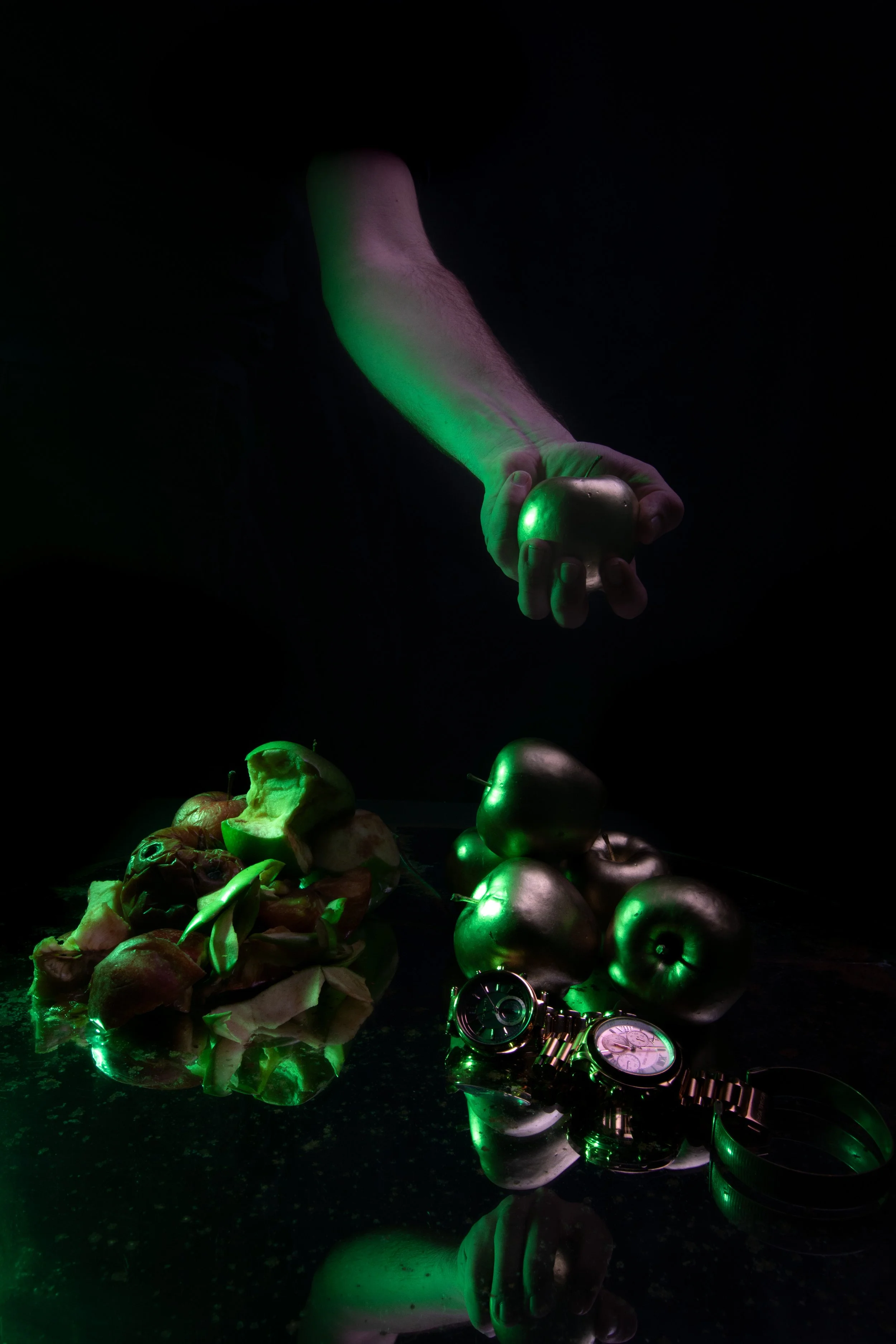

As I finalized my seven images depicting the seven deadly sins, I deliberately structured them as a series to convey a nuanced narrative. In each image, the human element represents the light side, the apple serves as the symbol of temptation at the core, and the sin itself emerges as the darkness within the composition. It's a deliberate interplay of elements that seeks to illustrate the interconnectedness of the sins.
Individually, these images may not resonate as strongly, but when viewed collectively, they weave a powerful story. The symbolism of the human element as the light side offers viewers a relatable entry point, grounding the series in a personal context. The central apple, representing temptation, serves as a unifying thread that ties the sins together.
However, it is the sin portrayed as the darkness within each image that underscores the weight and consequences associated with the seven deadly sins. By presenting them as a series, I aim to communicate that these vices are more impactful when considered together, rather than in isolation. This intentional structure invites viewers to reflect on the collective influence and repercussions of these powerful sins, reinforcing the notion that they are intricately interwoven.
As I contemplated the presentation of my images, I envisioned a unique approach that would not only showcase the visual elements but also convey a deeper understanding of the concepts. Inspired by the idea of incorporating text, I turned to Photoshop to bring this vision to life.
The first step involved creating a white border around each initial image, providing a distinct frame to enhance the visual impact. Then, I expanded the canvas size to a 1x1 ratio, transforming it into a black background. This decision was intentional, aiming to create a stark contrast that draws attention to the central image.
In the negative space above and below each image, I strategically inserted text related to each deadly sin. To add an extra layer of visual cohesion, I matched the color of the text to the aura or energy corresponding to each sin. This not only serves to label the sins but also creates a visual connection between the textual element and the sin's thematic color.
Furthermore, to enrich the viewer's experience, I decided to include quotes from unknown individuals or inspirational influencers. These quotes were carefully selected to resonate with the overarching themes of life and the specific deadly sins. The result is a presentation that goes beyond visual aesthetics, inviting viewers to engage with both the imagery and the thought-provoking text, creating a more immersive and meaningful experience.
As I approached the printing phase of my project, I initially considered a standard approach of printing the images on satin paper at 27.9x27.9, matching the dimensions of A3 paper. However, when I consulted with Christine at Matthew's Printing Shop in Birkirkara, I was open to exploring alternative options that would enhance the presentation of my work.
During the consultation, Christine suggested printing the images in a larger format of 30x30 on satin paper and mounting them onto foamboard frames. This choice offered structural integrity, making the prints more robust and easier to frame. Additionally, the foamboard frames provided the flexibility of hanging the prints directly, with the option to add hangers for easy display.
Considering the visual impact and narrative flow of the series, I initially envisioned displaying the prints in a linear sequence, presenting a visual storytelling narrative based on each of the seven deadly sins. However, upon reflection, I reevaluated the presentation to make it more engaging and aligned with the project's initial concept.
The revised plan involves arranging the prints on a wall in a strategic layout. The centerpiece would be the mightiest sin, pride, capturing attention and acting as the focal point. Envy and greed would flank pride on the left and right, while sloth and gluttony would be positioned either at the top or bottom. Completing the composition, wrath and lust would be placed either above pride or below it. This arrangement aims to create a dynamic visual impact, emphasizing the interconnectedness of the sins and encouraging viewers to engage with the narrative in a more immersive and thought-provoking manner.
final images - printed and layout for exhibition
Presentation day
Evaluation of Fine Art Project: THE HAND OF TEMPTATION: A VISUAL EXPLORATION OF THE 7 DEADLY SINS
Reflecting on the journey of conceptualising and creating my fine art project during this semester, I can discern both challenges and growth in my approach. Initially, I grappled with finding a solid concept, leading me to explore the state of decay and still-life photography influenced by memento mori. However, I faced difficulties in understanding the essence of a concept during feedback sessions. Subsequently, the philosophical concept of yin and yang sparked inspiration, leading me to focus on the dichotomy between the seven deadly sins and the seven holy virtues.
As I started the fine art project for this semester, I was at a loss on how to approach the difficult process of coming up with a captivating theme. My investigation began with a study of decay, with memento mori and nature morte serving as sources of inspiration. I concentrated on still life photography that had a dark aesthetic. But getting comments showed that it was difficult to understand a concept's core. Then something changed when I thought about the interaction between light and dark and explored the philosophical contrast of yin and yang. I started thinking about the contradiction between the seven deadly sins and the seven holy virtues as a result of my investigation. Owing to time constraints, I focused only on the seven deadly sins. I imagined a depiction in which the hand represented the relationship that humans have with light, the fruit represented temptation in the centre, and the sins themselves represented the dark side of the project. My creative approach was greatly influenced by the work of well-known fine art practitioners like Man Ray, Edward Steichen, Edward Weston, Jerry Uelsmann, Joel-Peter Witkin, and Hiroshi Sugimoto. But October and November were difficult months for me creatively, made worse by personal problems; in particular, delays in transit made it difficult for me to explore in the studio. In spite of these obstacles, the purchase of studio lighting in December was a game-changer because it allowed me to work from home in comfort.
A new strategy was used in the test shooting phase that followed, emphasising the hand, apple, and items that symbolised each sin and arranged in visual diptychs or triptychs. Several pictures with different lighting were made possible by the use of Godox MS300 studio lights; however, underexposure problems were encountered and fixed after receiving helpful criticism.
When the project was almost finished, there was a lack of coherence among the separate image panels, which led to improvisation. To communicate a more complete story, the collection was transformed into a single panel consisting of seven square-format photos, each with text about the first sin. Time management and early concept communication are still areas of difficulty, while flexibility, ingenuity, and the project's ongoing conceptual development are its strong points.
Anticipating further, the project's next stage entails investigating the seven heavenly qualities in order to finish the intended thematic continuum. This fine art unit has highlighted how much effort and time it takes to put together a cogent panel for pop-up or exhibition settings. Equipped with this fresh insight, I will make it a priority to advance in the areas where we encountered difficulties in this unit.
Strengths:
Conceptual Evolution: The transition from exploring decay to the juxtaposition of yin and yang in the context of the seven deadly sins demonstrates a significant conceptual evolution. This shift added depth and meaning to the project.
Inspirational Sources: Drawing inspiration from renowned fine art practitioners such as Man Ray, Edward Steichen, and others allowed me to incorporate diverse influences into my work. Their innovative techniques and unique perspectives enriched my own creative process.
Adaptability and Problem Solving: Overcoming personal challenges, such as transportation issues, showcased my adaptability and determination. The decision to work with Godox MS300 studio lights from home demonstrated resourcefulness and a commitment to the project.
Visual Exploration: The decision to visually explore the seven deadly sins through the elements of the hand, the apple, and the sins themselves provided a structured framework. The use of colour gels and the diptych/triptych format added visual interest and coherence to the series.
Implementation of Feedback: Acknowledging issues with underexposed images during test shoots and subsequently adjusting the exposure while maintaining the dark style of the concept illustrates an ability to implement constructive feedback.
Weaknesses:
Time Management: Personal challenges with transportation delayed experimentation in the class studio and limited the time available for test shooting and refinement.
Concept Communication: The initial presentation of individual images lacked a cohesive narrative, making it challenging for viewers to grasp the overall concept. Recognizing this, I improvised by presenting the images as a panel with relevant text.
Way Forward:
Completing the Project: Recognizing that this project is the first part of a larger series focusing on the seven deadly sins, I plan to extend it by exploring the seven holy virtues. This holistic approach will provide a comprehensive perspective on the dichotomy of vices and virtues.
Exhibition Preparation: Building on the lessons learned, I aim to enhance my organisational skills for future exhibitions or pop-up venues. This involves meticulous planning, better time management, and effective communication of the concept to the audience.
Continuous Improvement: The knowledge gained from this unit, coupled with identified strengths and weaknesses, serves as a foundation for continuous improvement. I plan to refine my skills, experiment with new techniques, and delve deeper into thematic exploration in future projects.
In conclusion, this fine art unit has been a valuable learning experience, highlighting the dedication and effort required to create a cohesive and impactful body of work. The insights gained will undoubtedly inform my future artistic endeavors, guiding me towards a more refined and nuanced approach in conveying complex concepts through visual storytelling.
Reference List
1X (n.d.). Maria Kaimaki. [online] 1x.com. Available at: https://1x.com/justeline [Accessed 28 Nov. 2023].
Apostol, Y.V. (n.d.). Yaroslav Vasiliev-Apostol. [online] 1x.com. Available at: https://1x.com/apostol [Accessed 28 Nov. 2023].
Art limited (2019). Of Tide and Nightfall by Maria Kaimaki, Photography. [online] Art Limited. Available at: https://www.artlimited.net/1044419/art/photography-of-tide-and-nightfall-miscellaneous-people-female/en/11714315 [Accessed 28 Nov. 2023].
Behance (n.d.). Marko Nad on Behance. [online] Behance. Available at: https://www.behance.net/markonadj [Accessed 28 Nov. 2023].
Dekis, D. (2023). How to Use Symbolism in Photography (+ Examples). [online] Shotkit. Available at: https://shotkit.com/symbolism-in-photography/ [Accessed 28 Nov. 2023].
fineartamerica (n.d.). Hand Photos for Sale (Page #5 of 35). [online] Fine Art America. Available at: https://fineartamerica.com/art/photographs/hand?page=5 [Accessed 28 Nov. 2023].
fineartamerica (n.d.). Inga Hockamp - LiaFXart. [online] Fine Art America. Available at: https://fineartamerica.com/profiles/inga-hockamp?tab=about [Accessed 28 Nov. 2023].
History, T.E. of G.M. (2021). Seven Deadly Sins Symbols With Meanings. [online] Give Me History. Available at: https://www.givemehistory.com/seven-deadly-sins-symbols [Accessed 28 Nov. 2023].
interesting literature (2021). The Curious Symbolism of Apples in Literature and Myth. [online] Interesting Literature. Available at: https://interestingliterature.com/2021/04/apples-symbolism-in-literature-myth-meaning-analysis/# [Accessed 28 Nov. 2023].
Italy, www celesteprize com-Celeste N. - (n.d.). Giorgio Toniolo - Artist - Celeste Network. [online] www.celesteprize.com. Available at: https://www.celesteprize.com/member/idu:90555/page:1/ [Accessed 28 Nov. 2023].
Kaimaki, M. (n.d.). Maria Kaimaki. [online] PiART. Available at: https://photoimaginart.com/profile/maria-kaimaki [Accessed 28 Nov. 2023].
Kidofozz (n.d.). Log in or sign up to view. [online] www.facebook.com. Available at: https://www.facebook.com/kidofOzz/ [Accessed 28 Nov. 2023].
Liafxart (n.d.). Dark Photographer | Visual Storyteller. [online] liafxart. Available at: https://www.liafxart.com/aboutme [Accessed 28 Nov. 2023].
Liafxart (n.d.). Dark Photographer | Visual Storyteller. [online] liafxart. Available at: https://www.liafxart.com/gallery [Accessed 28 Nov. 2023].
Maria Kaimaki (n.d.). 500px. [online] 500px.com. Available at: https://500px.com/p/MaryKay?view=photos [Accessed 28 Nov. 2023].
Mireles, A. (2021). 8 BEST Hand Poses for Natural Portrait Photography. [online] Shotkit. Available at: https://shotkit.com/hand-poses/ [Accessed 28 Nov. 2023].
Nast, C. (n.d.). Marko Nadj | Portfolio | PhotoVogue. [online] Vogue. Available at: https://www.vogue.com/photovogue/photographers/322.
Redazione (2021). The story of Adam and Eve. [online] Holyart.com Blog. Available at: https://www.holyart.com/blog/religious-items/the-story-of-adam-and-eve/.
Rose, M. (2021). The apple as a symbol. [online] The Together Plan. Available at: https://thetogetherplan.com/the-apple-as-a-symbol/.
sidreddy (2021). Meet Inga Hockamp / aka LiaFXart | DARKART PHOTOGRAPHER | VISUAL STORYTELLER | POET | PROSTHETIC ARTIST & SCULPTOR FOR MASKS AND HORNS. [online] SHOUTOUT LA. Available at: https://shoutoutla.com/meet-inga-hockamp-aka-liafxart-darkart-photographer-visual-storyteller-poet-prosthetic-artist-sculptor-for-masks-and-horns/ [Accessed 28 Nov. 2023].
spirit animal dreams (n.d.). SEVEN DEADLY SINS SYMBOLS - Symbolism & Meaning. [online] SYMBOLS. Available at: https://spiritanimaldreams.com/seven-deadly-sins-symbolism/.
The Editors of Encyclopaedia Britannica (2019). yinyang | Definition & Meaning. In: Encyclopædia Britannica. [online] Available at: https://www.britannica.com/topic/yinyang.
Toniolo, giorgio (n.d.). Giorgio Toniolo @ artavita. [online] www.artavita.com. Available at: https://www.artavita.com/artists/16944-giorgio-toniolo [Accessed 28 Nov. 2023].
Behance (2014). Seven Deadly Still Lifes. [online] Behance. Available at: https://www.behance.net/gallery/16313779/Seven-Deadly-Still-Lifes [Accessed 18 Jan. 2024].
Best, K. (2010). Still Life Roemer with nuts and lemon (after Pieter Claesz). [online] Flickr. Available at: https://www.flickr.com/photos/kevsyd/albums/72157600514197400/page2 [Accessed 18 Jan. 2024].
Biola University Center for Christian Thought / The Table. (2016). Lust, Greed, Sloth, Fear: A Spiritual Psychology of Sin. [online] Available at: https://cct.biola.edu/lust-greed-sloth-fear-spiritual-psychology-sin/.
Contributor, G. (2021). Fire Photography: How to Capture Fire Photos Like a Pro. [online] Digital Photography School. Available at: https://digital-photography-school.com/how-to-photograph-fire/.
Holden Luntz Gallery (2023). Edward Weston Archives. [online] Holden Luntz Gallery. Available at: https://www.holdenluntz.com/artists/edward-weston/.
McGowan, K. (2019). The Neuroscience of the Seven Deadly Sins. [online] Discover Magazine. Available at: https://www.discovermagazine.com/the-sciences/the-neuroscience-of-the-seven-deadly-sins [Accessed 18 Jan. 2024].
Morris, L. and EDGE OF HUMANITY MAGAZINE (2018). The Seven Deadly Sins | Oil On Canvas. [online] Edge of Humanity Magazine. Available at: https://edgeofhumanity.com/2018/10/23/sins/ [Accessed 18 Jan. 2024].
Müller, C. (2022). General 5. [online] Christian Müller. Available at: https://www.muellerphotographer.com/thesevendeadlysins [Accessed 18 Jan. 2024].
Letinsky, L. (2010). Works - Laura Letinsky: The Dog and The Wolf. [online] moniquemeloche. Available at: https://www.moniquemeloche.com/exhibitions/168-laura-letinsky-the-dog-and-the-wolf/works/ [Accessed 25 Jan. 2024].
Huxley-Parlour Gallery (2018). Edward Weston’s ‘Cabbage’. [online] AN ICON OF MODERNIST PHOTOGRAPHY: EDWARD WESTON’S ‘CABBAGE’. Available at: https://huxleyparlour.com/critical-texts/an-icon-of-modernist-photography/.
boudrot, danielle (2011). edward weston. [online] a thoughtful eye. Available at: https://athoughtfuleye.wordpress.com/category/edward-weston/ [Accessed 25 Jan. 2024].
Artnet (2023). Joel-Peter Witkin. [online] Artnet.com. Available at: https://www.artnet.com/artists/joel-peter-witkin/biography [Accessed 2024].
Artnet (2022). Jerry Uelsmann. [online] Artnet.com. Available at: https://www.artnet.com/artists/jerry-uelsmann/biography [Accessed 2024].
MoMA (2017). Man Ray (Emmanuel Radnitzky). [online] The Museum of Modern Art. Available at: https://www.moma.org/artists/3716 [Accessed 2024].
Ackermann , N. and Gobert, S.G. (2017). Looking for Lenin Niels Ackermann / Sébastien Gobert. [online] delpire & co. Available at: https://www.delpireandco.com/en/produit/looking-for-lenin/ [Accessed 25 Jan. 2024].
